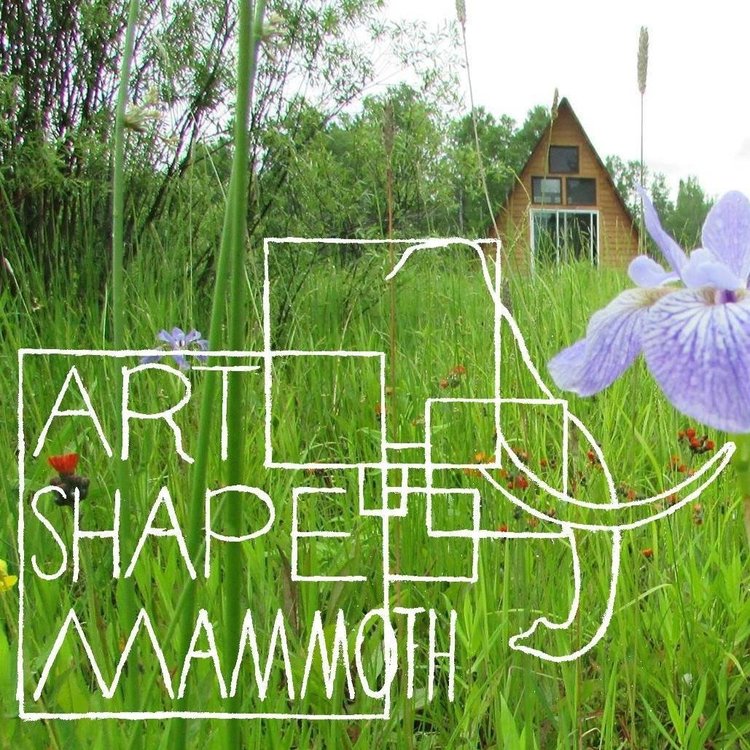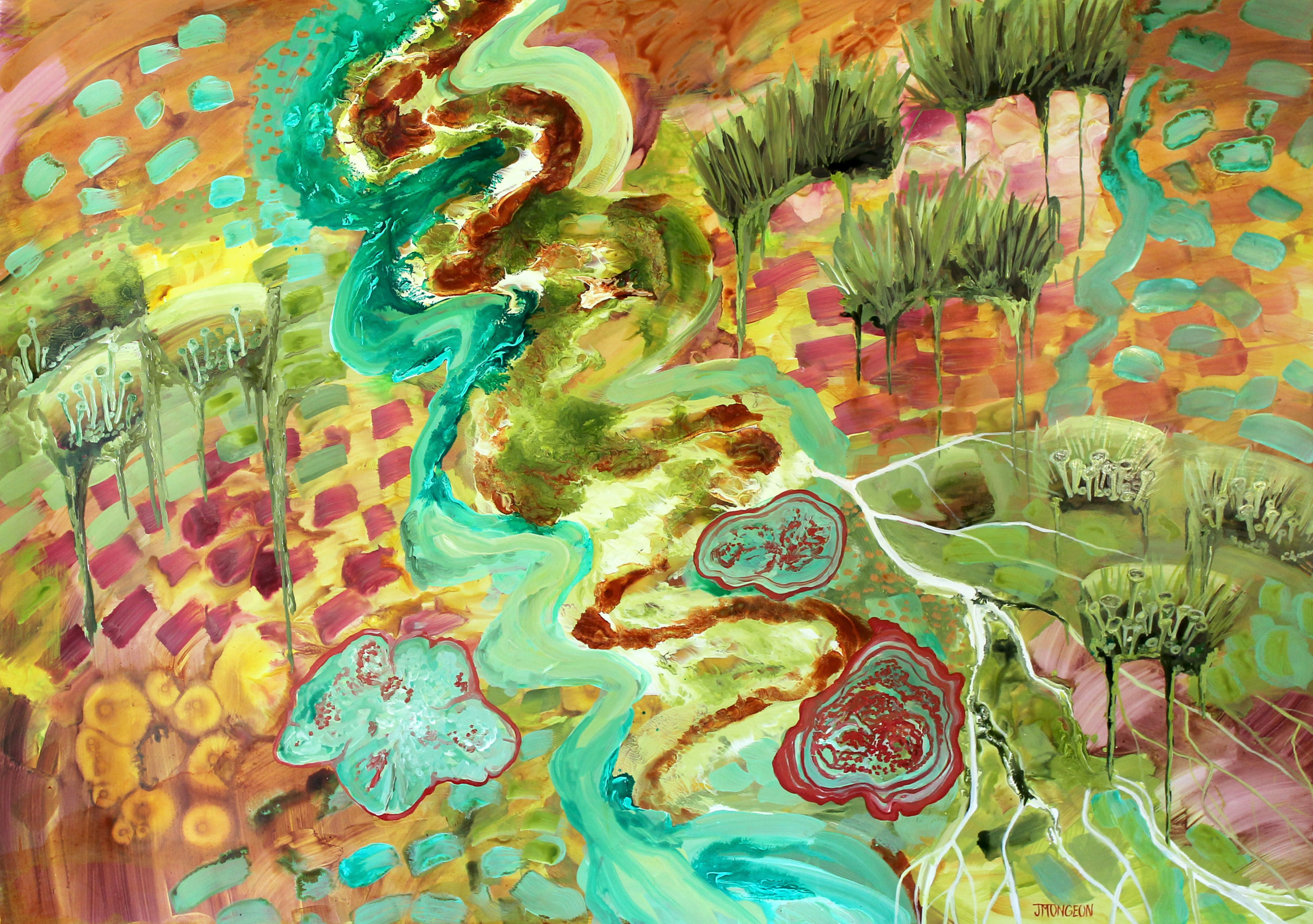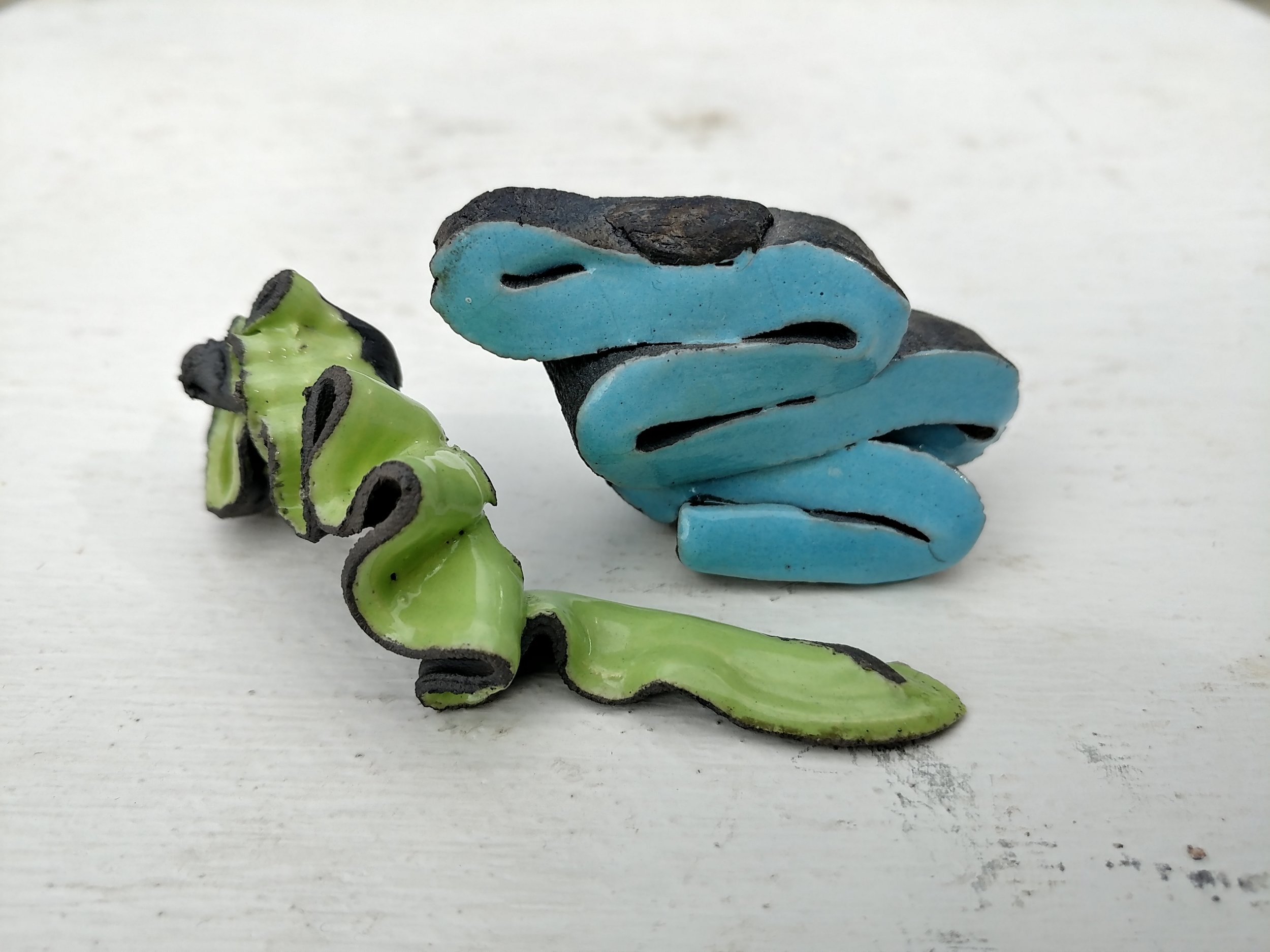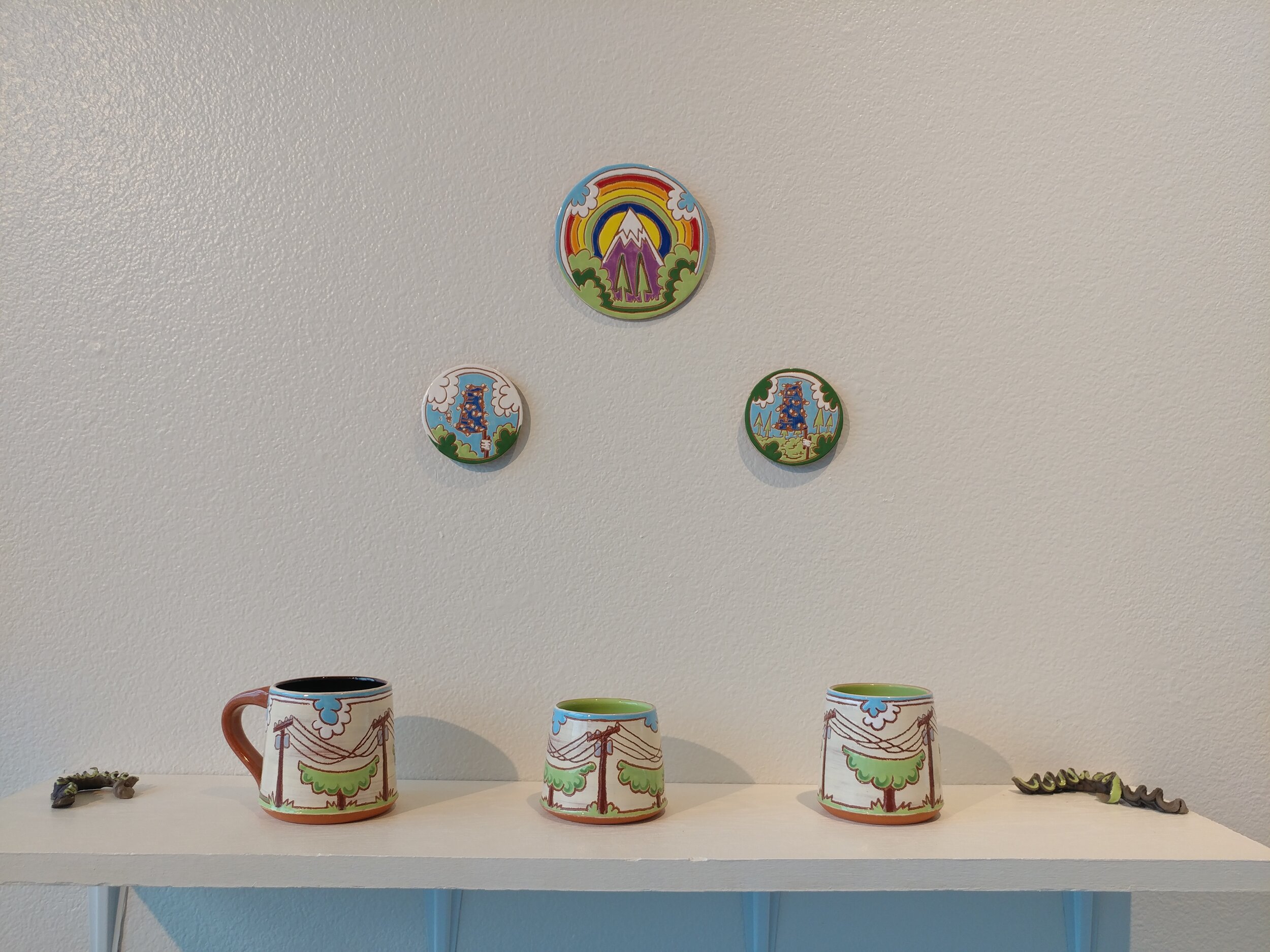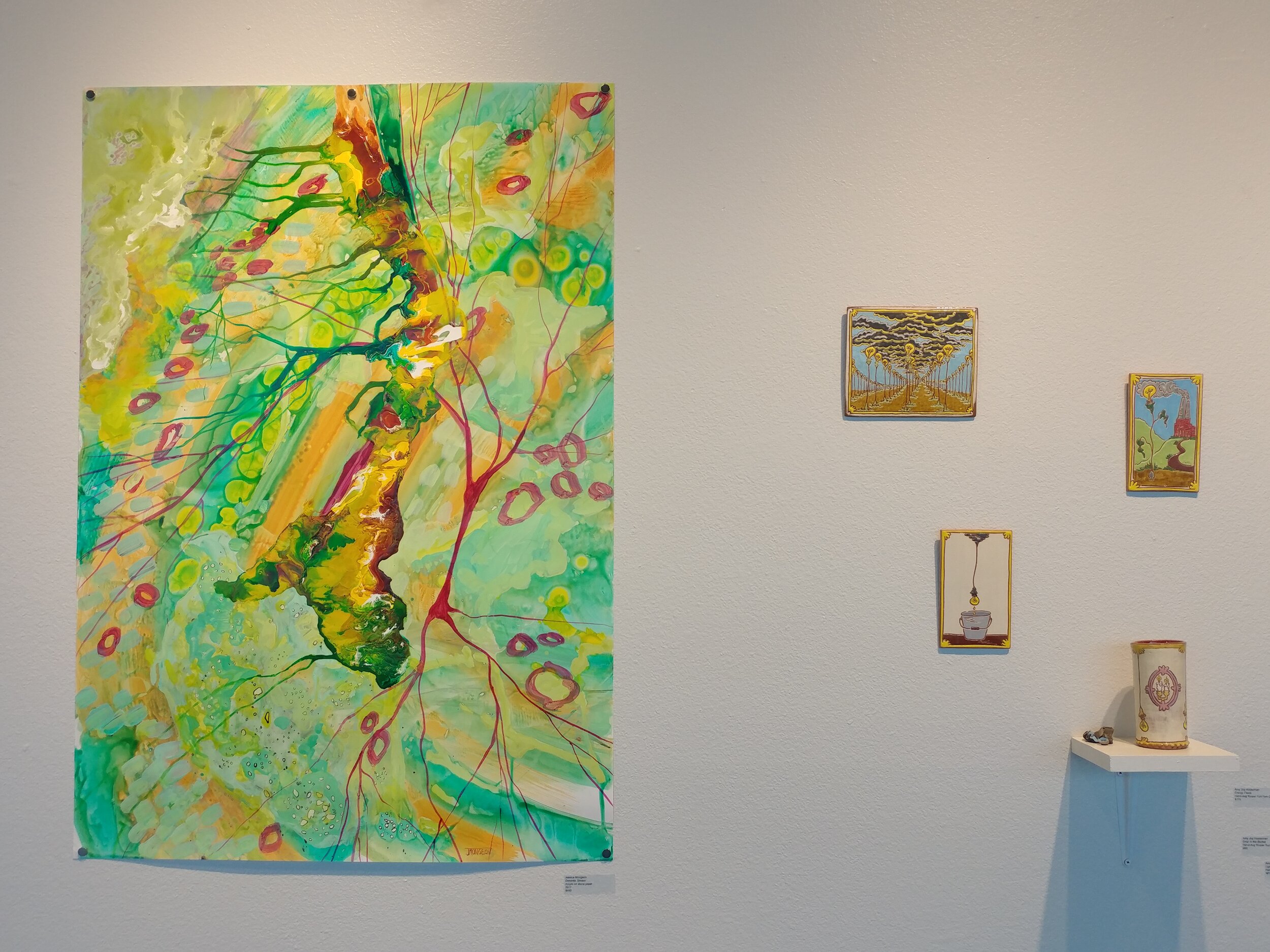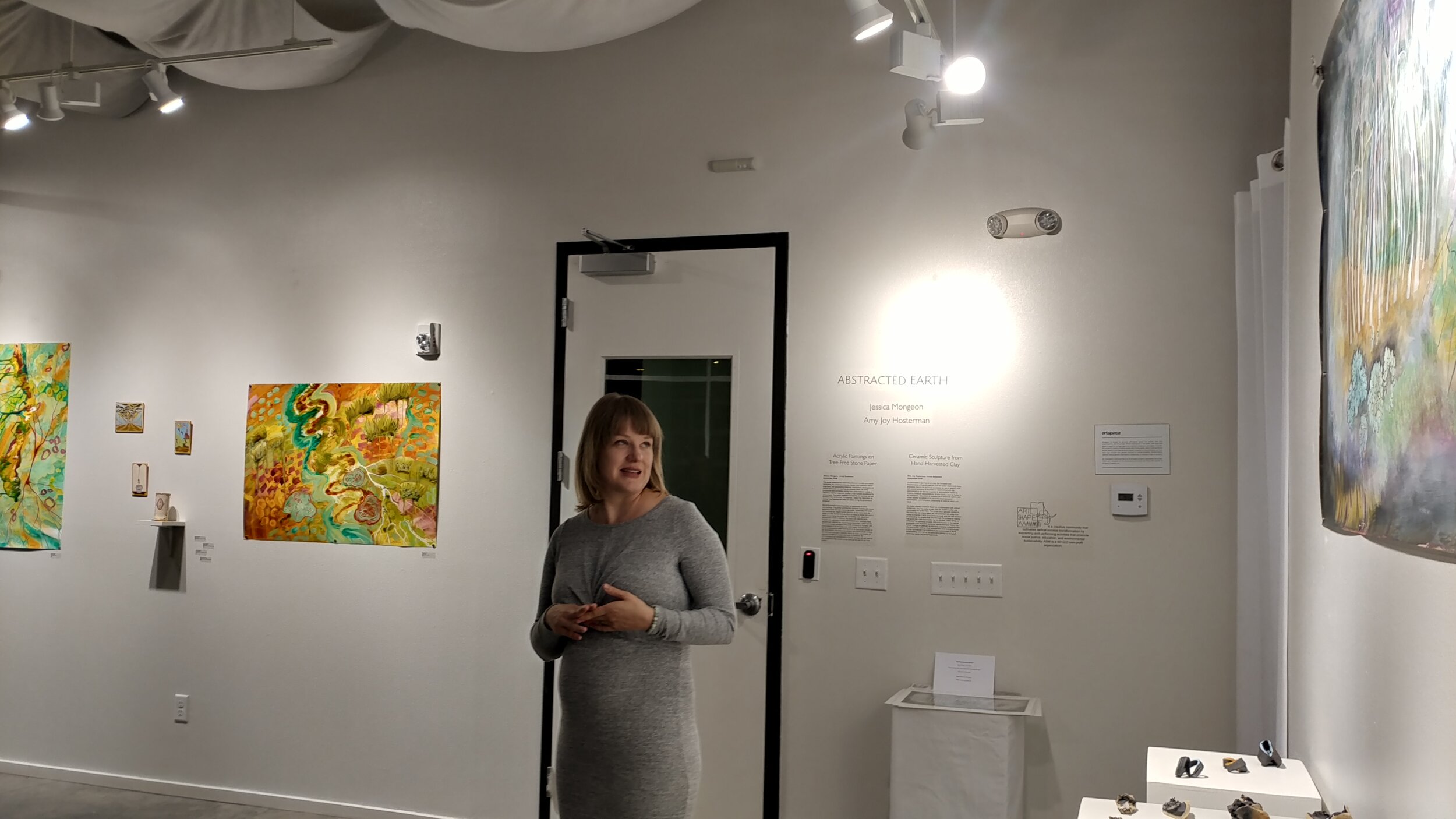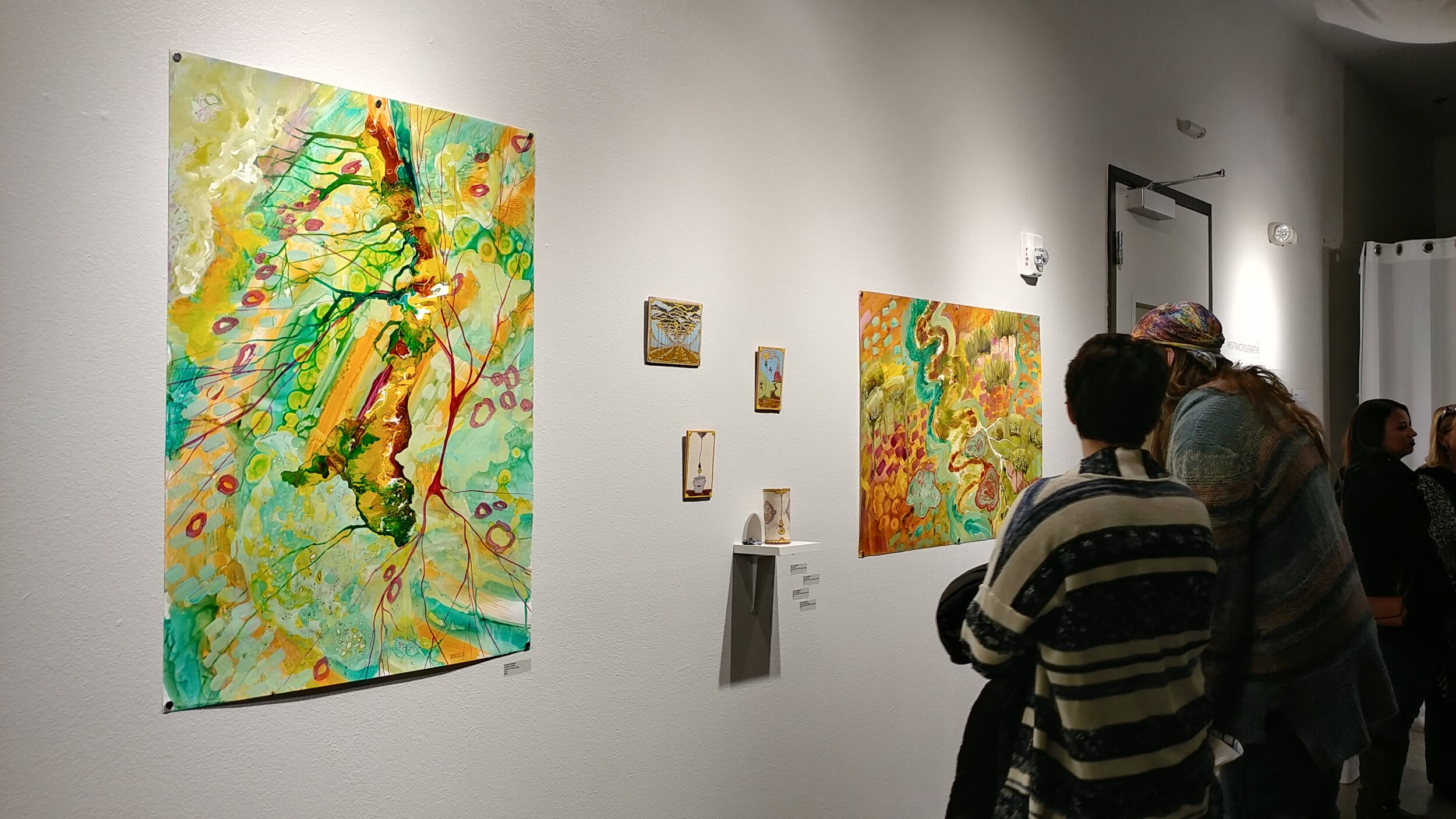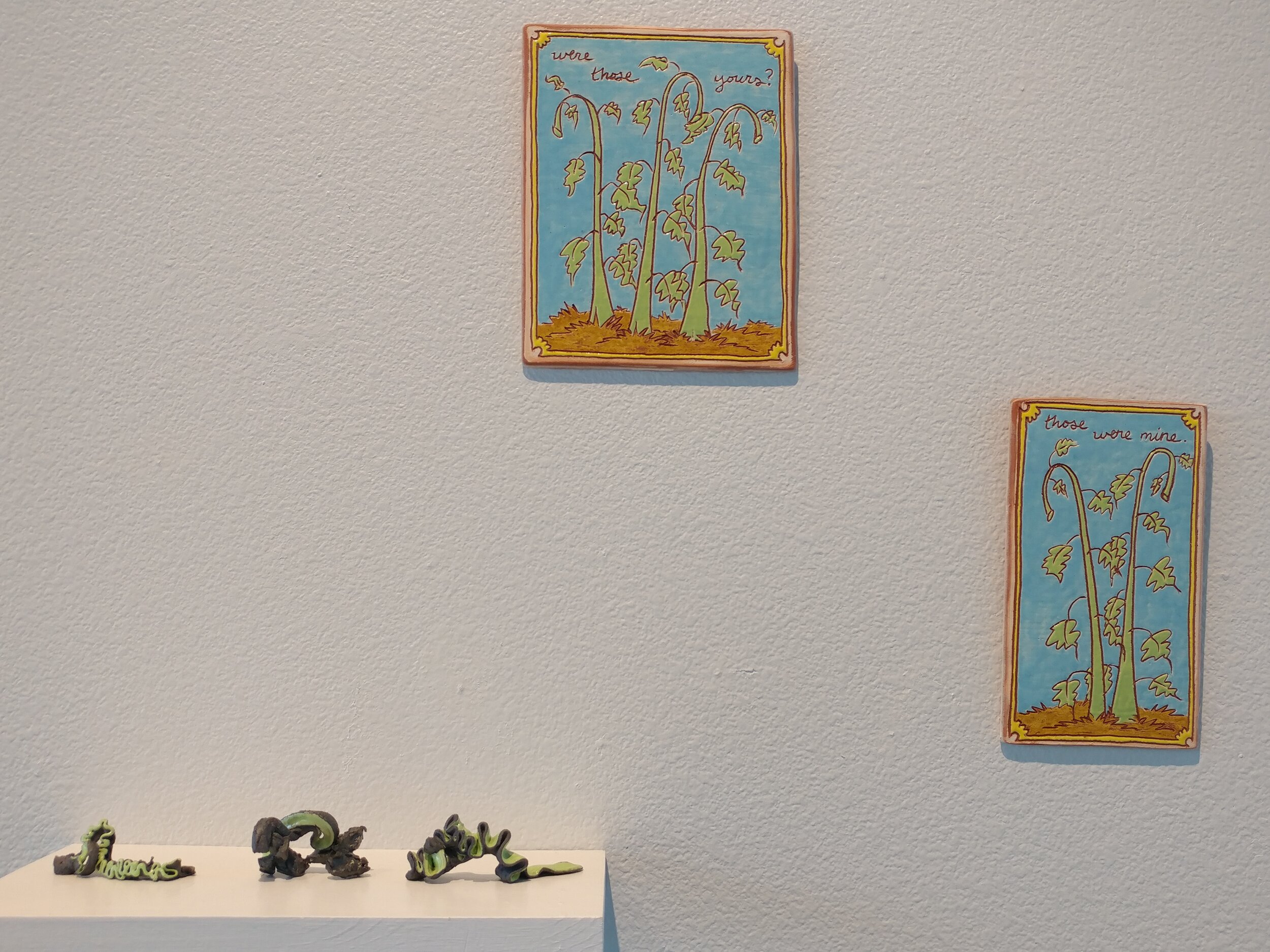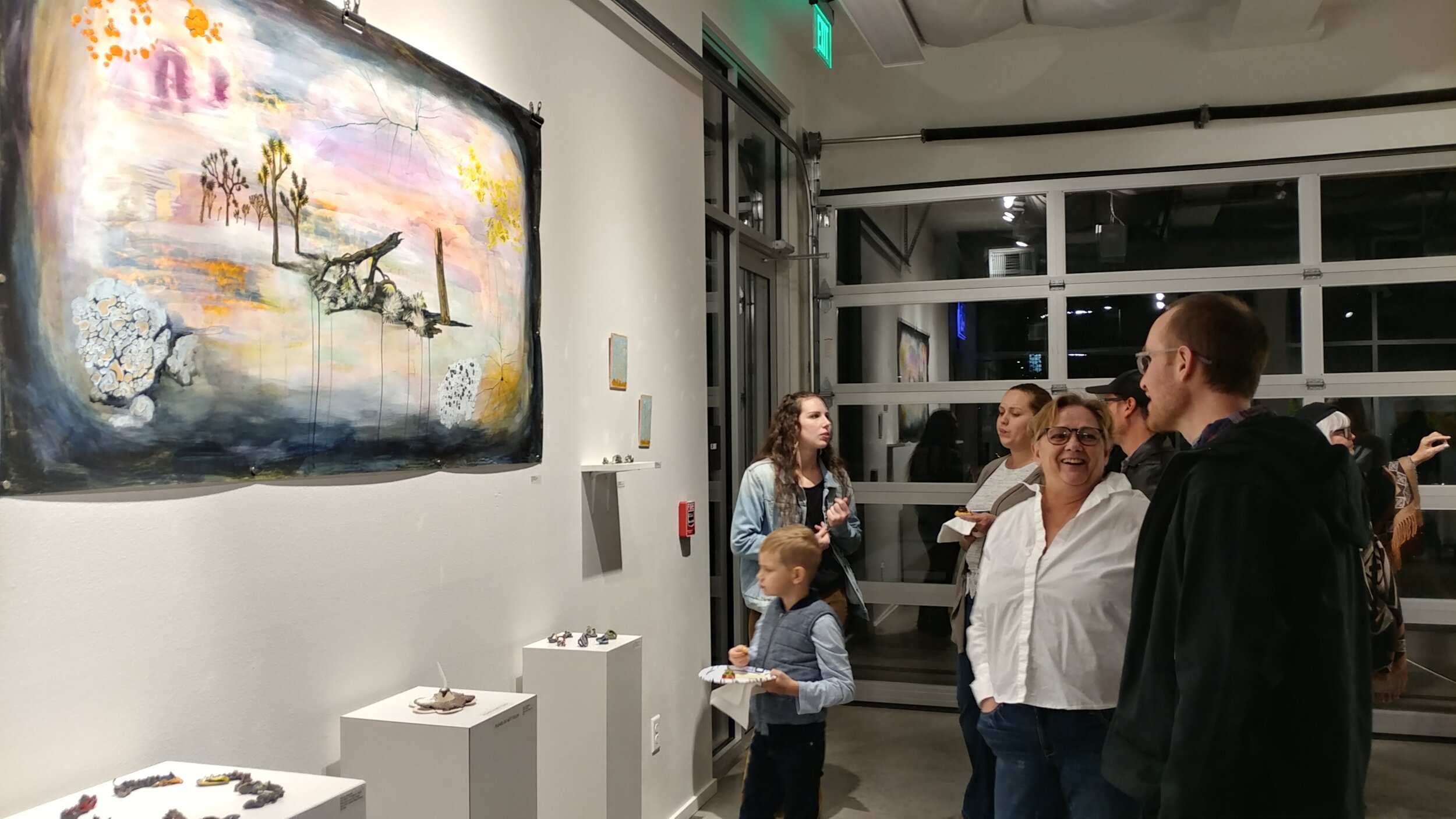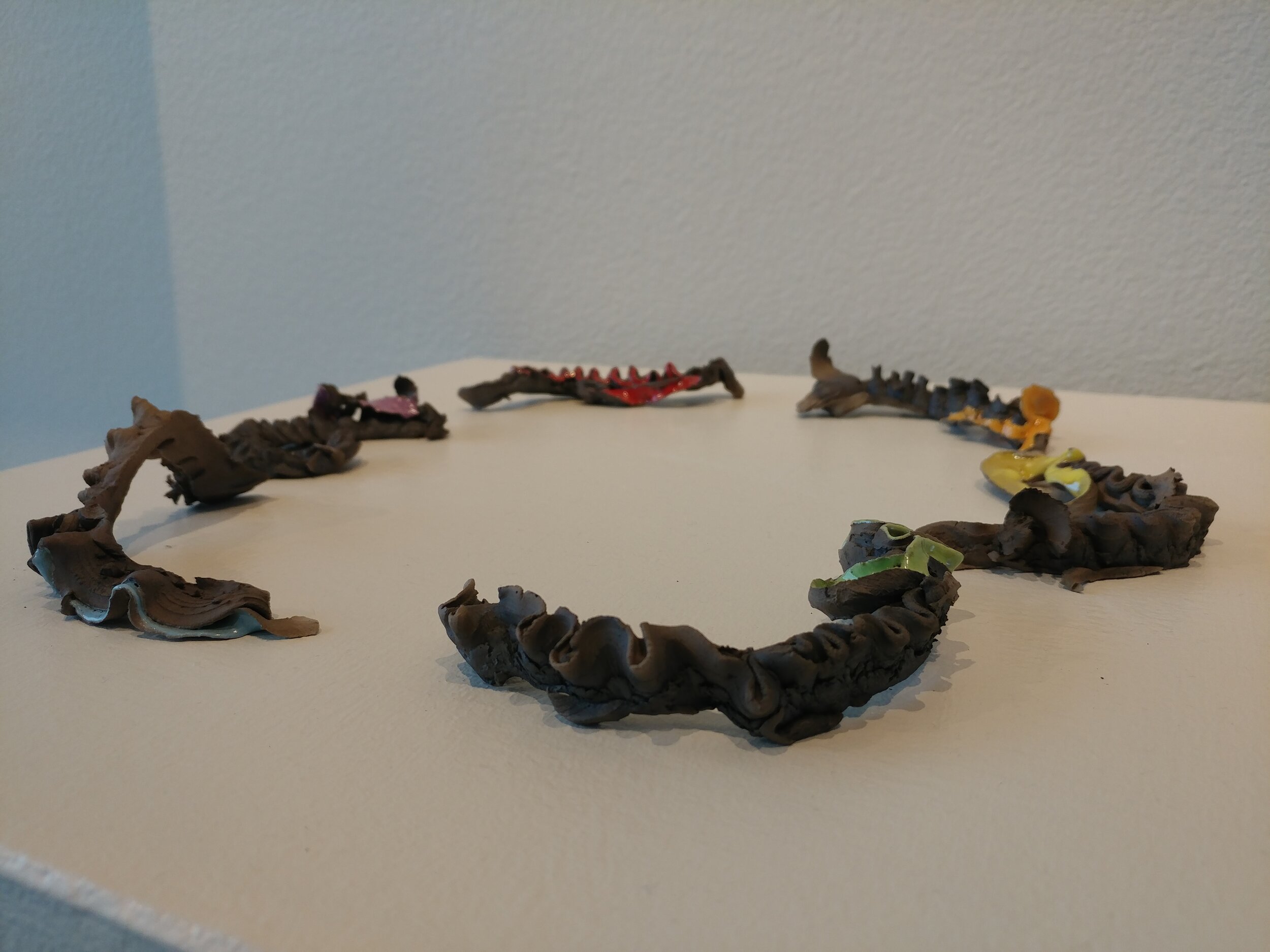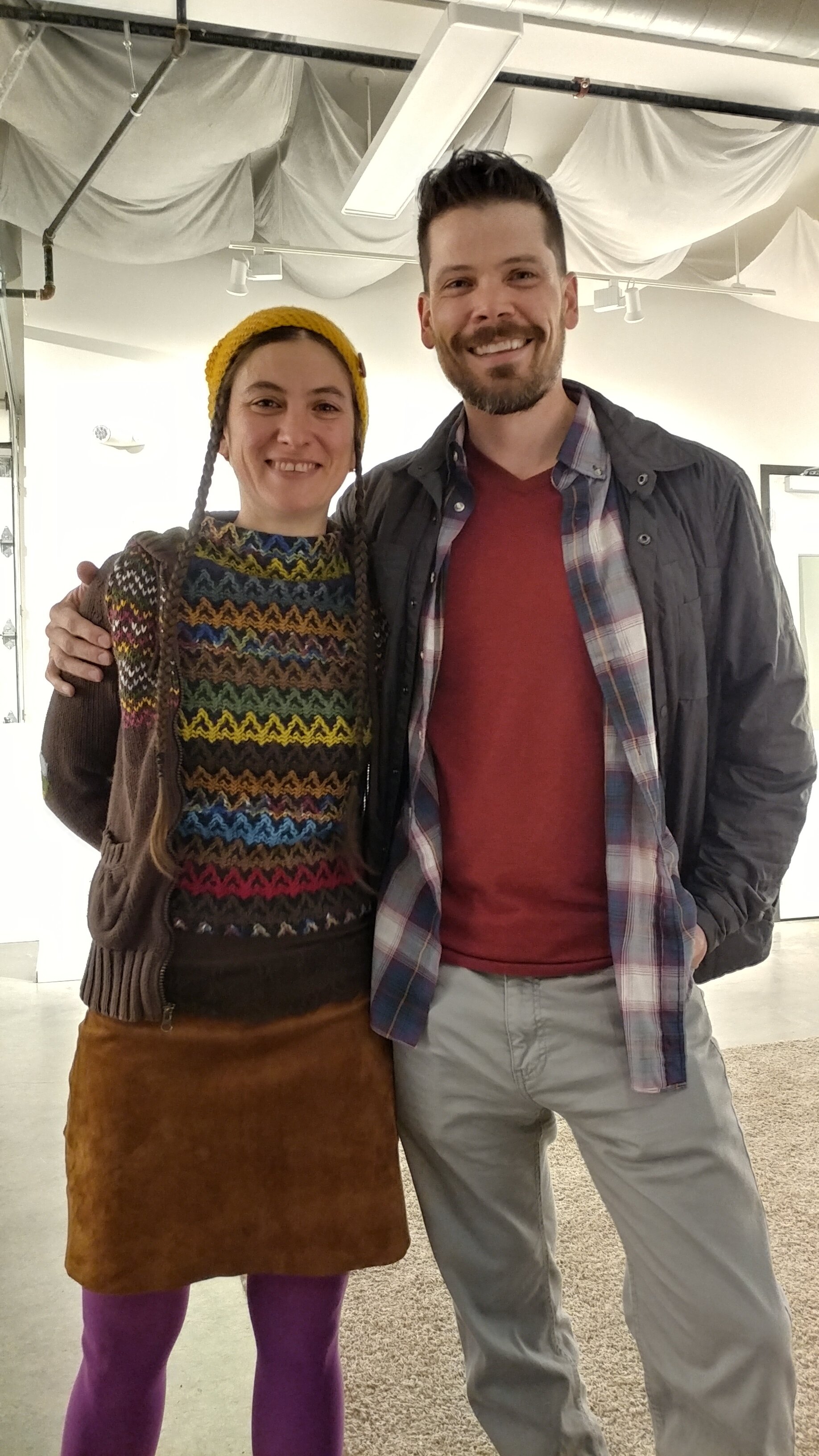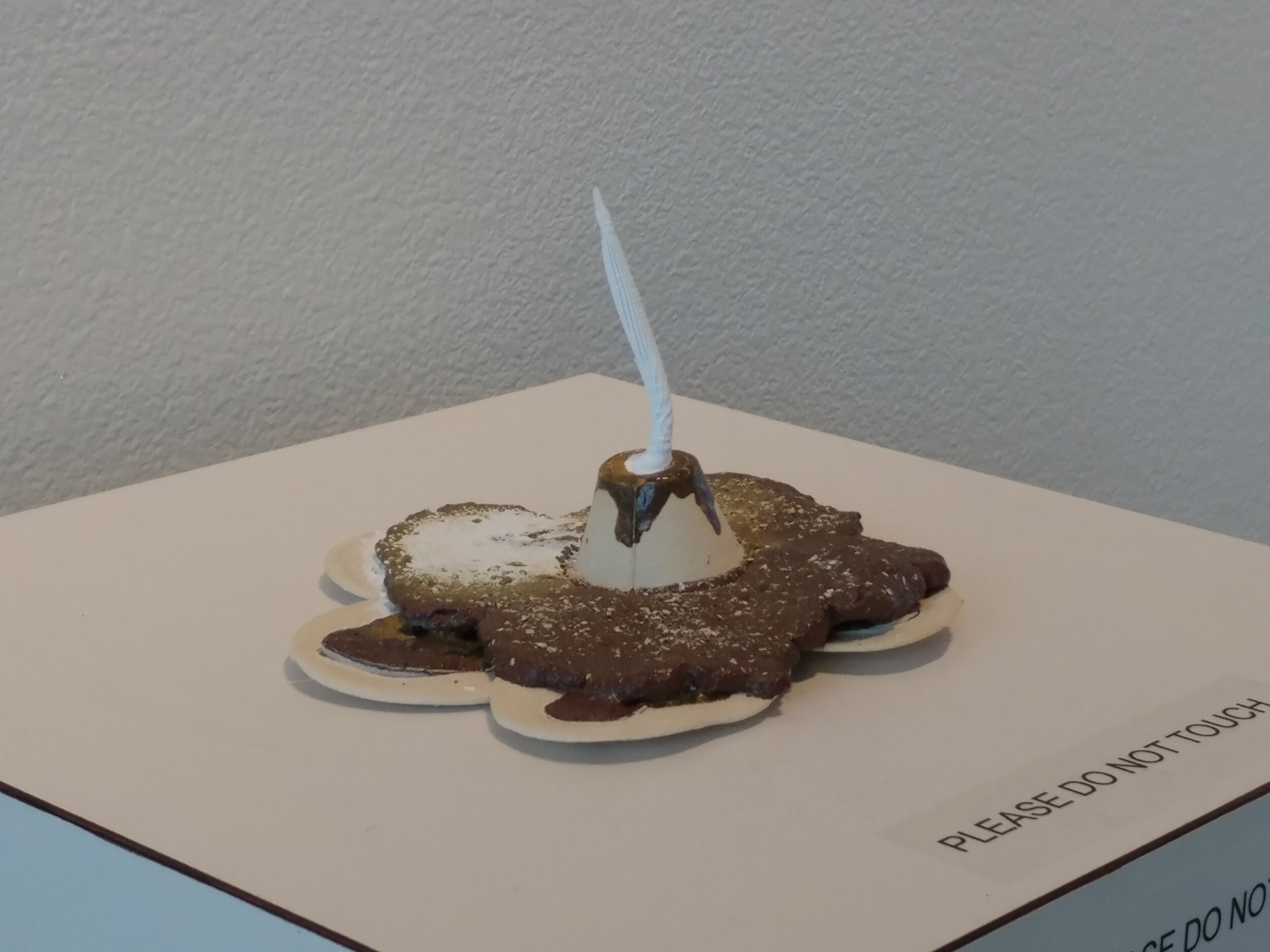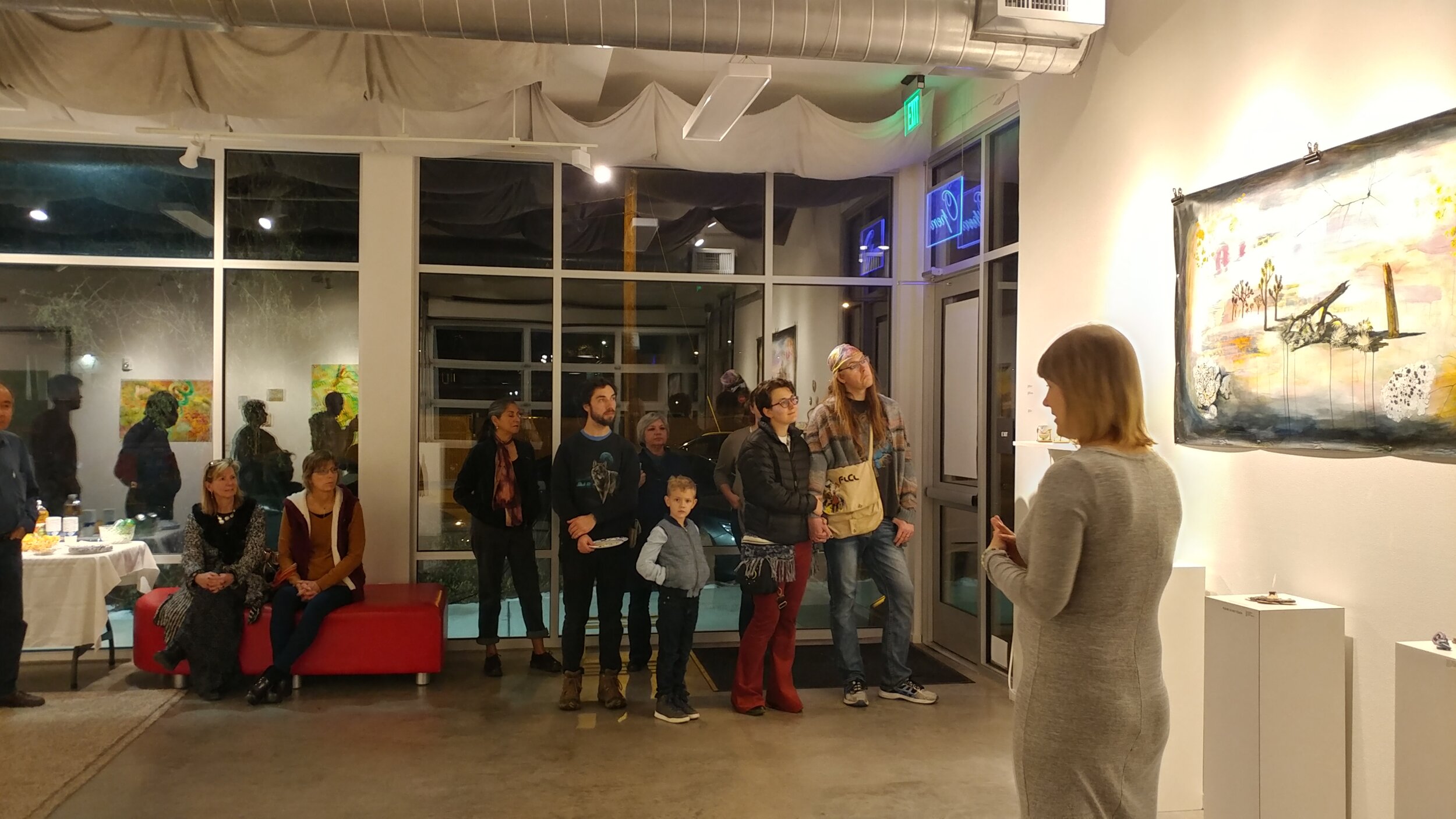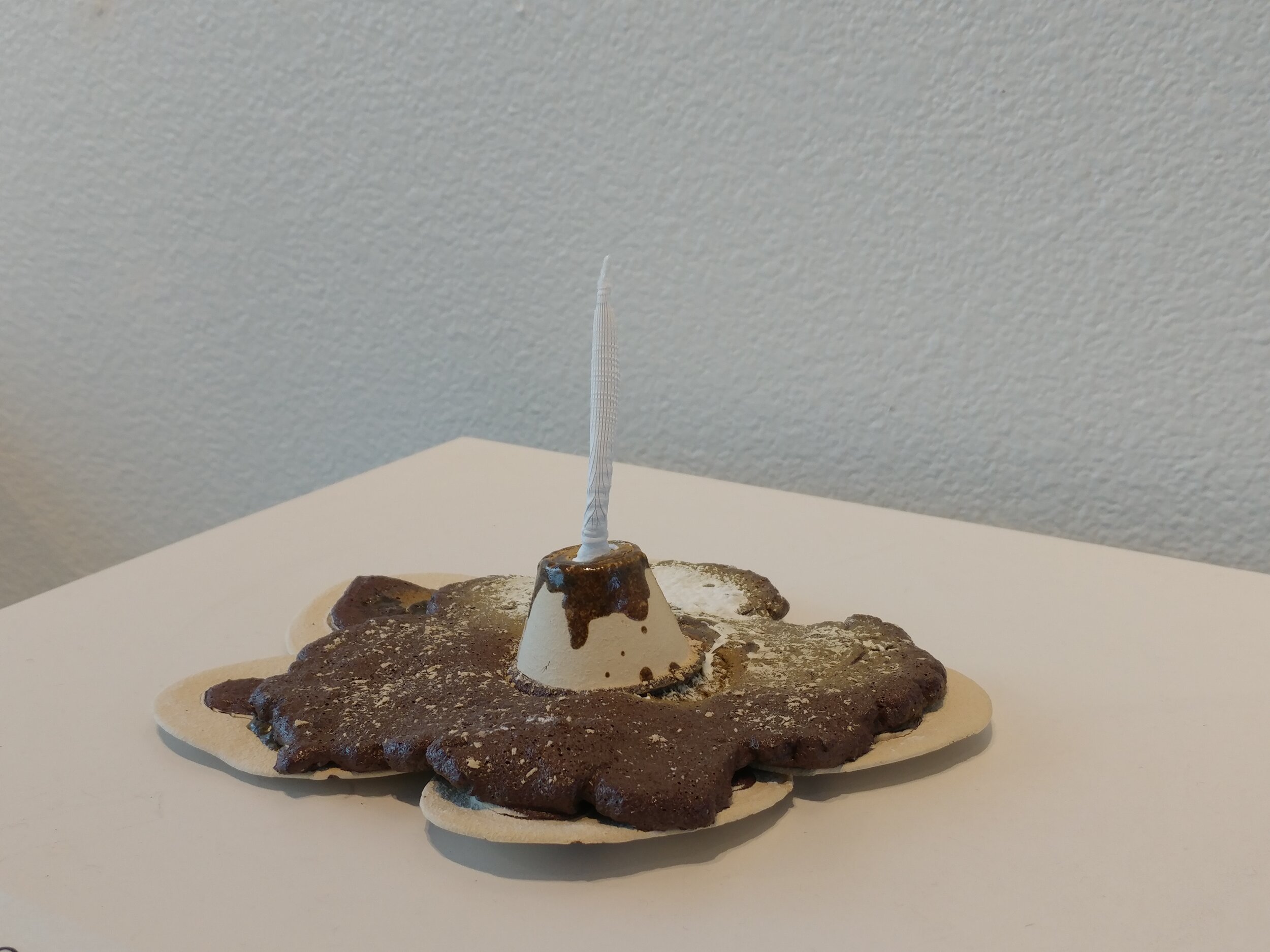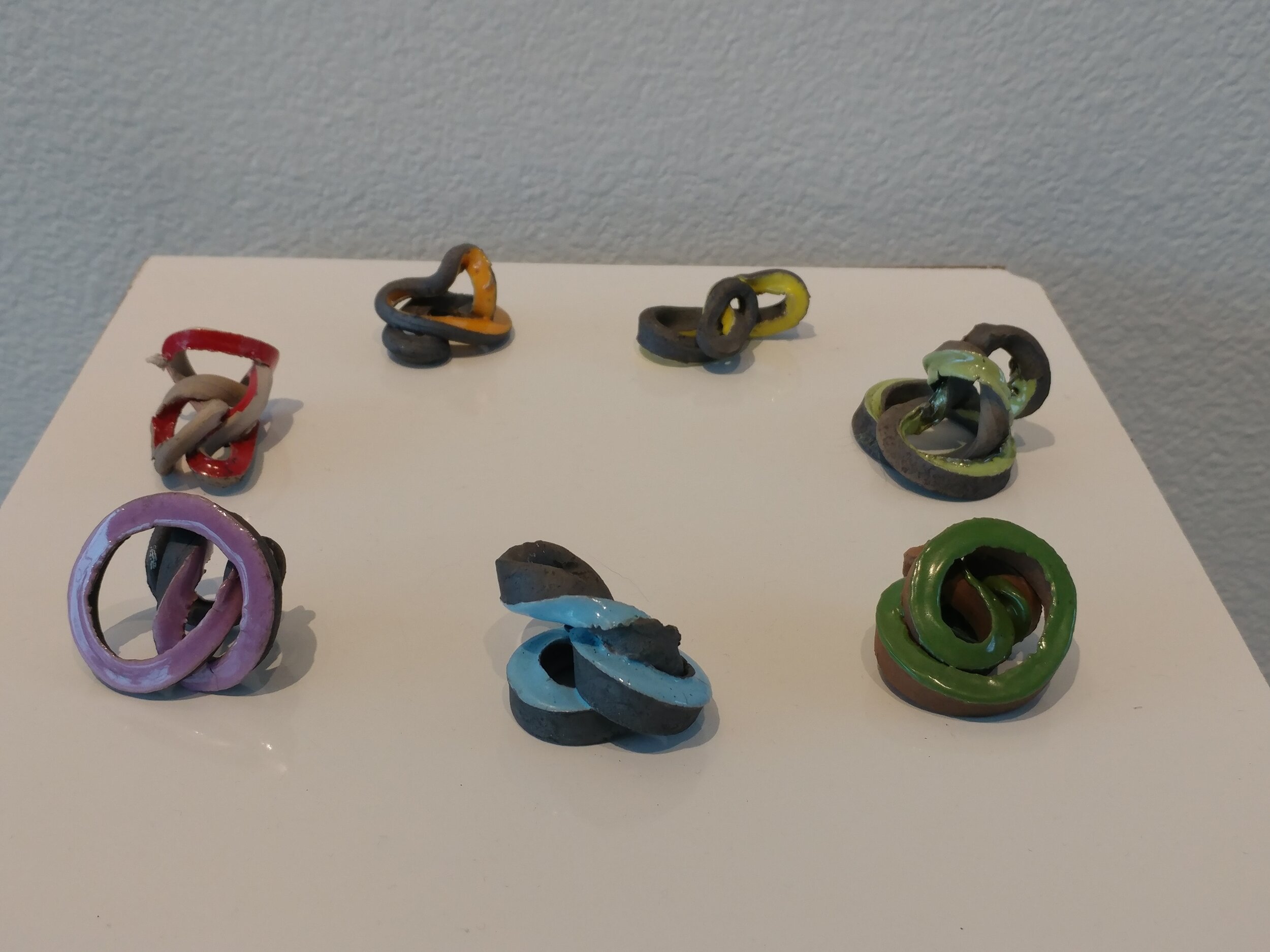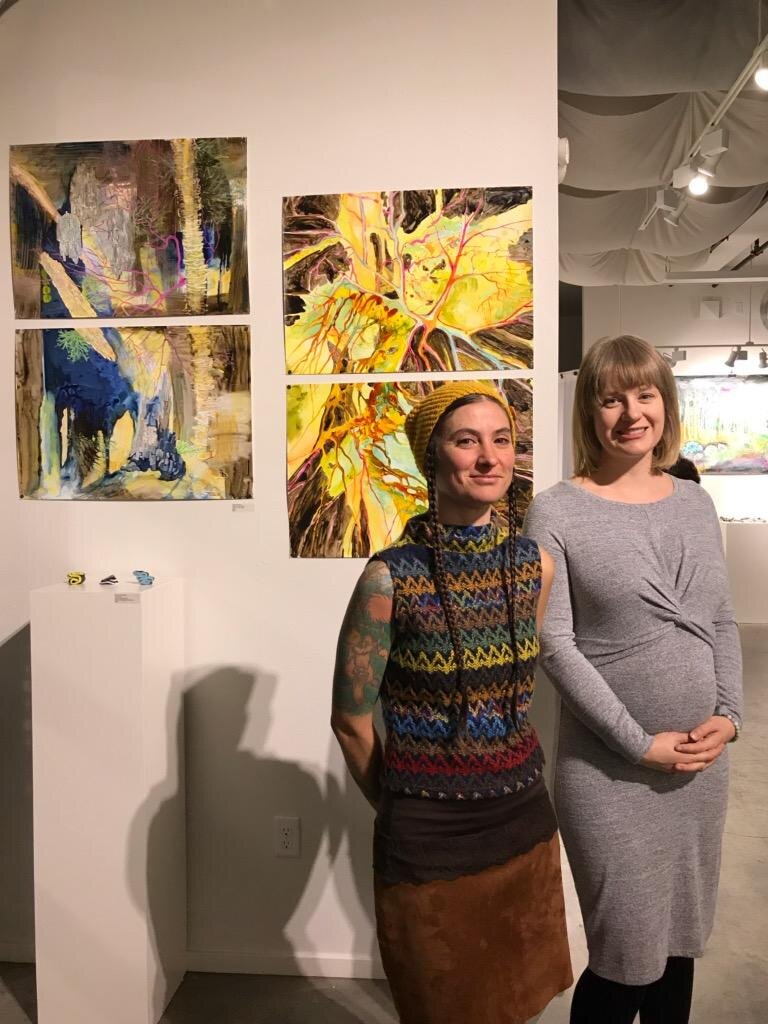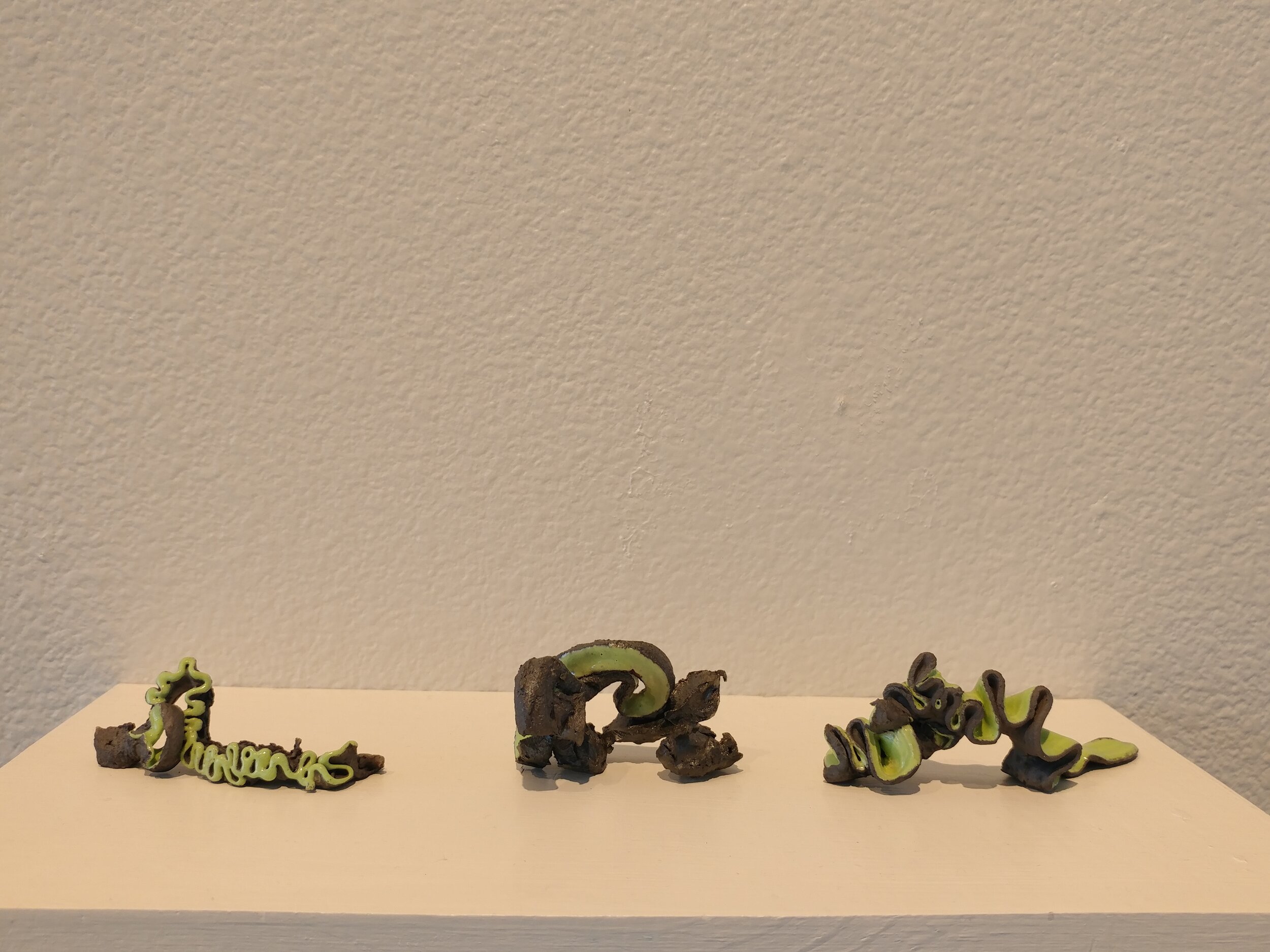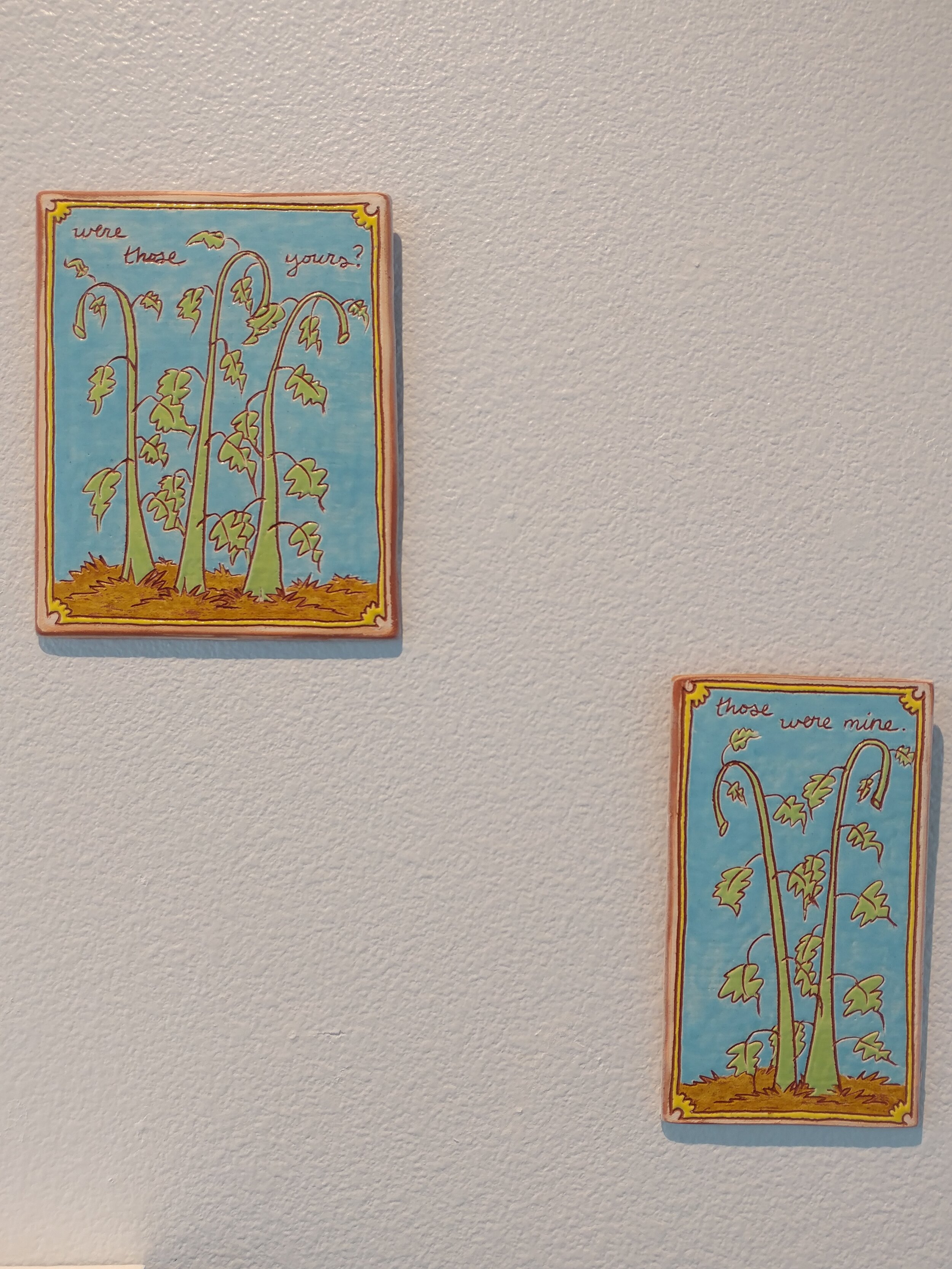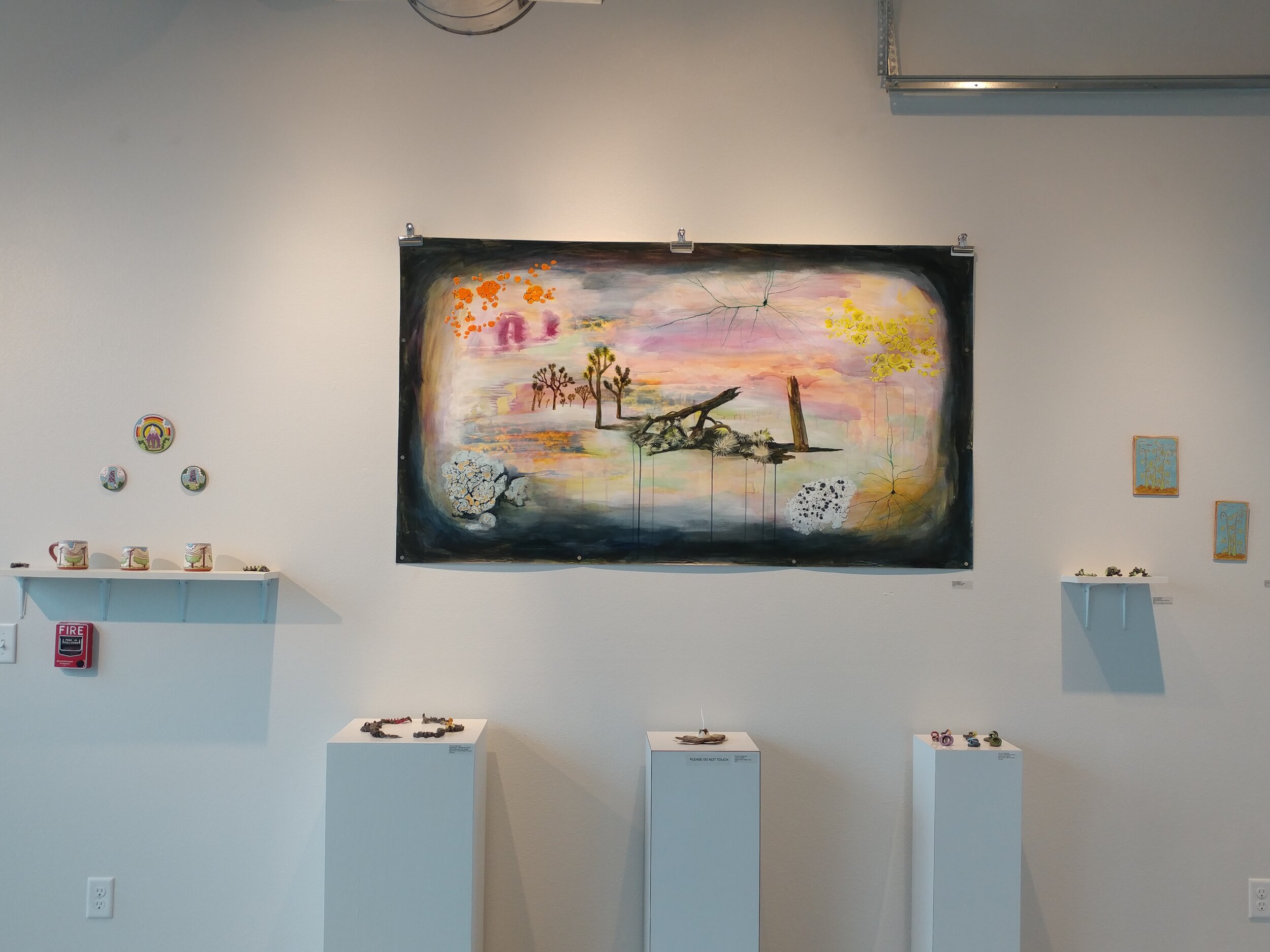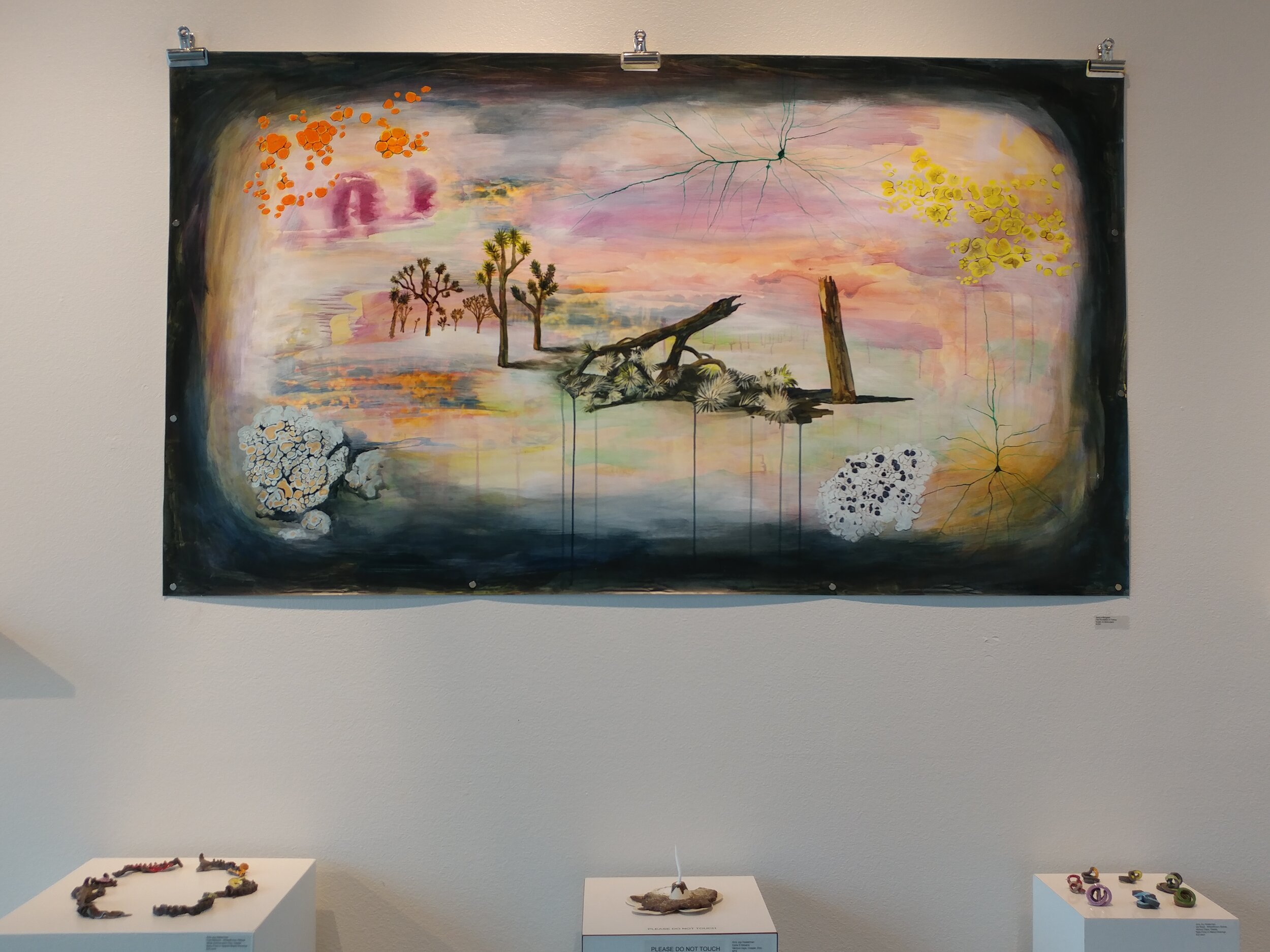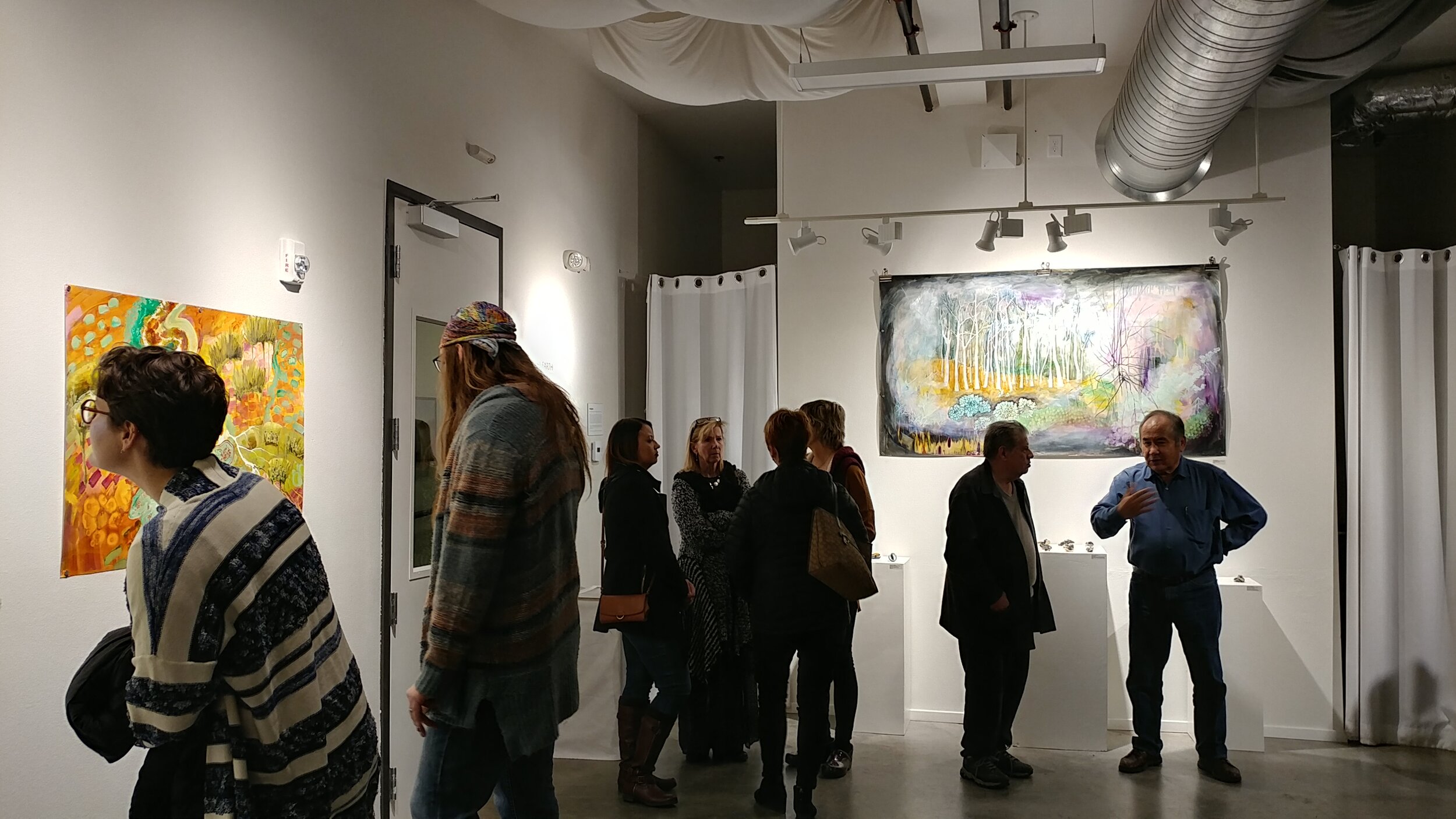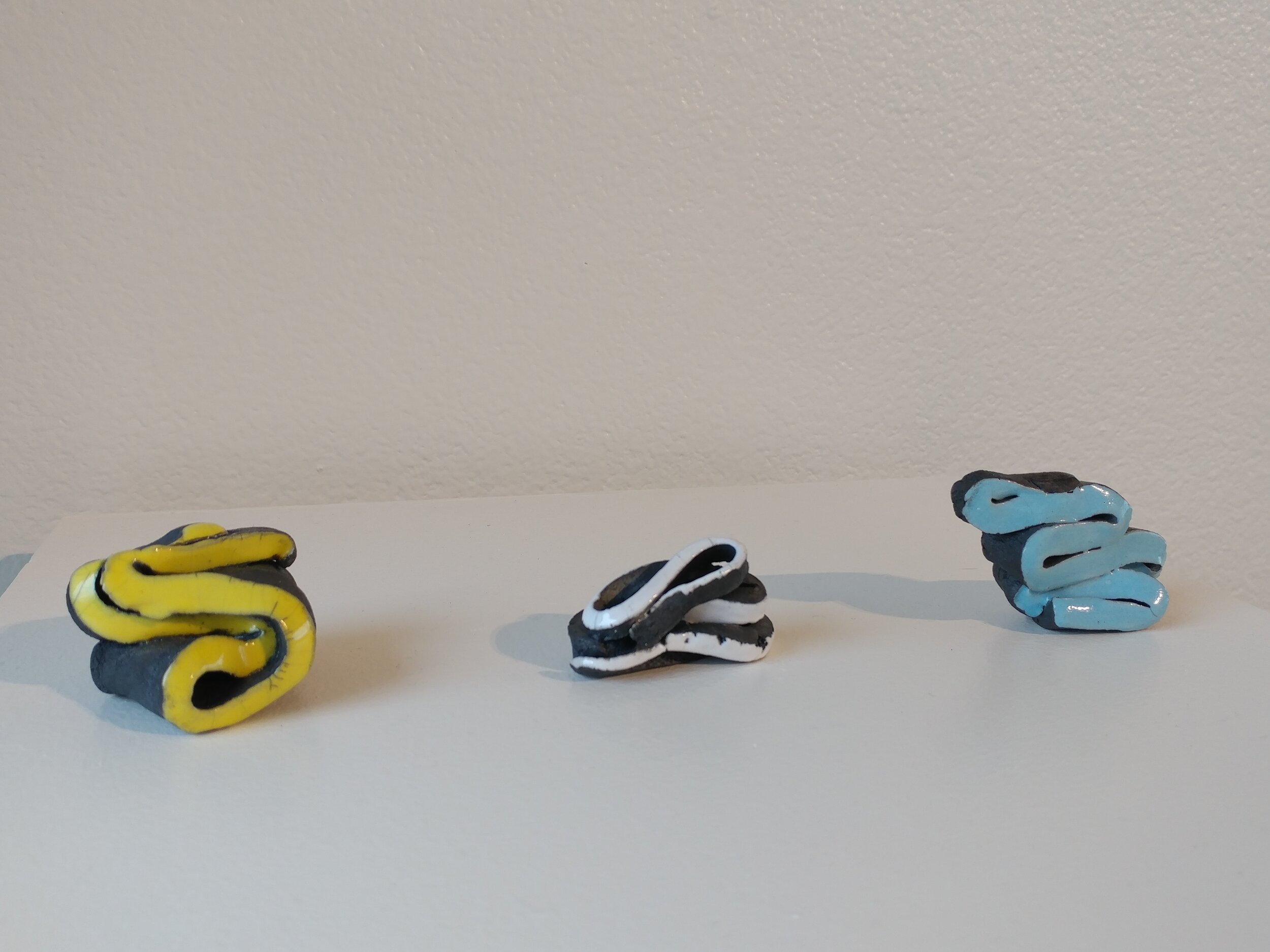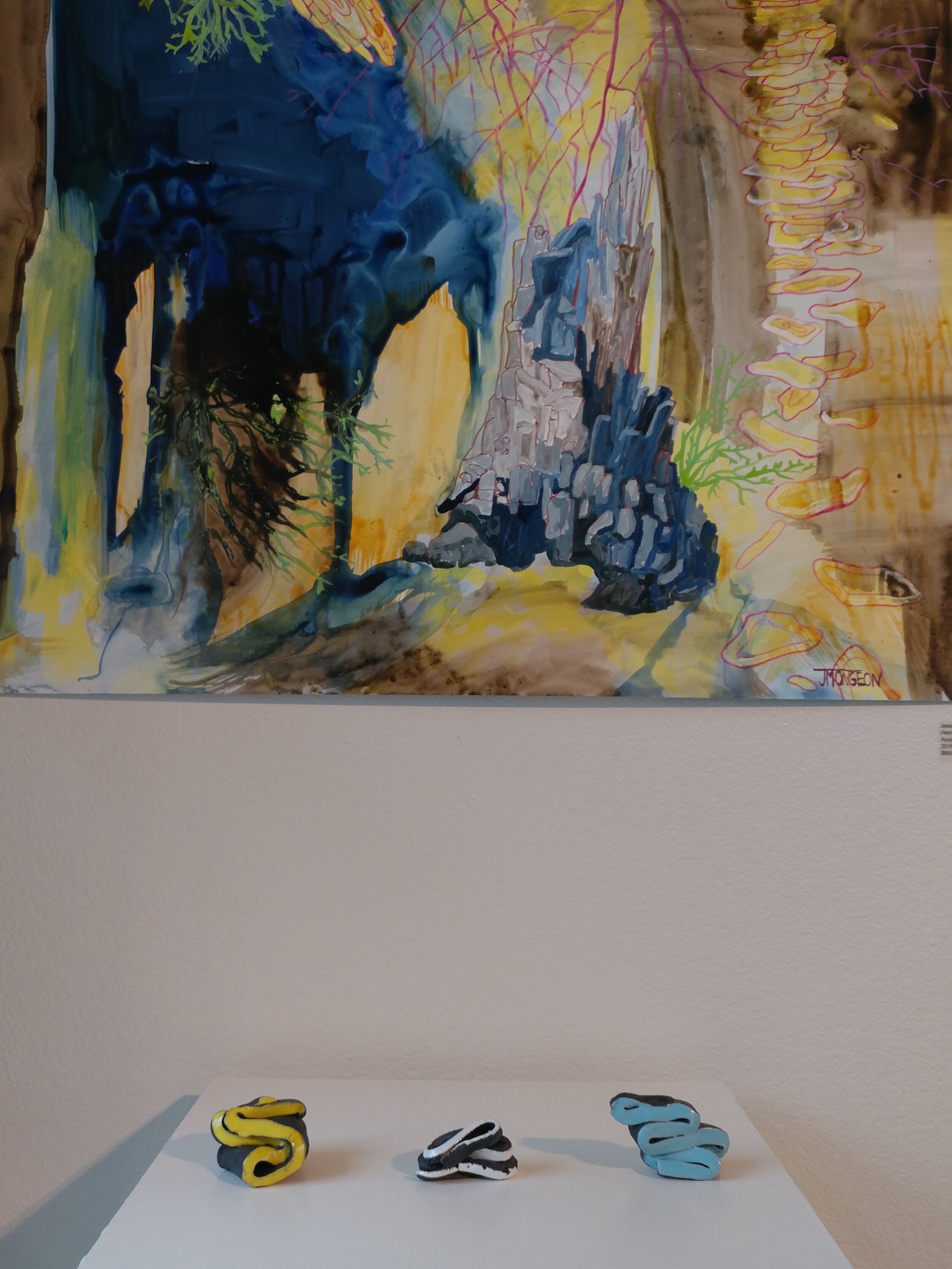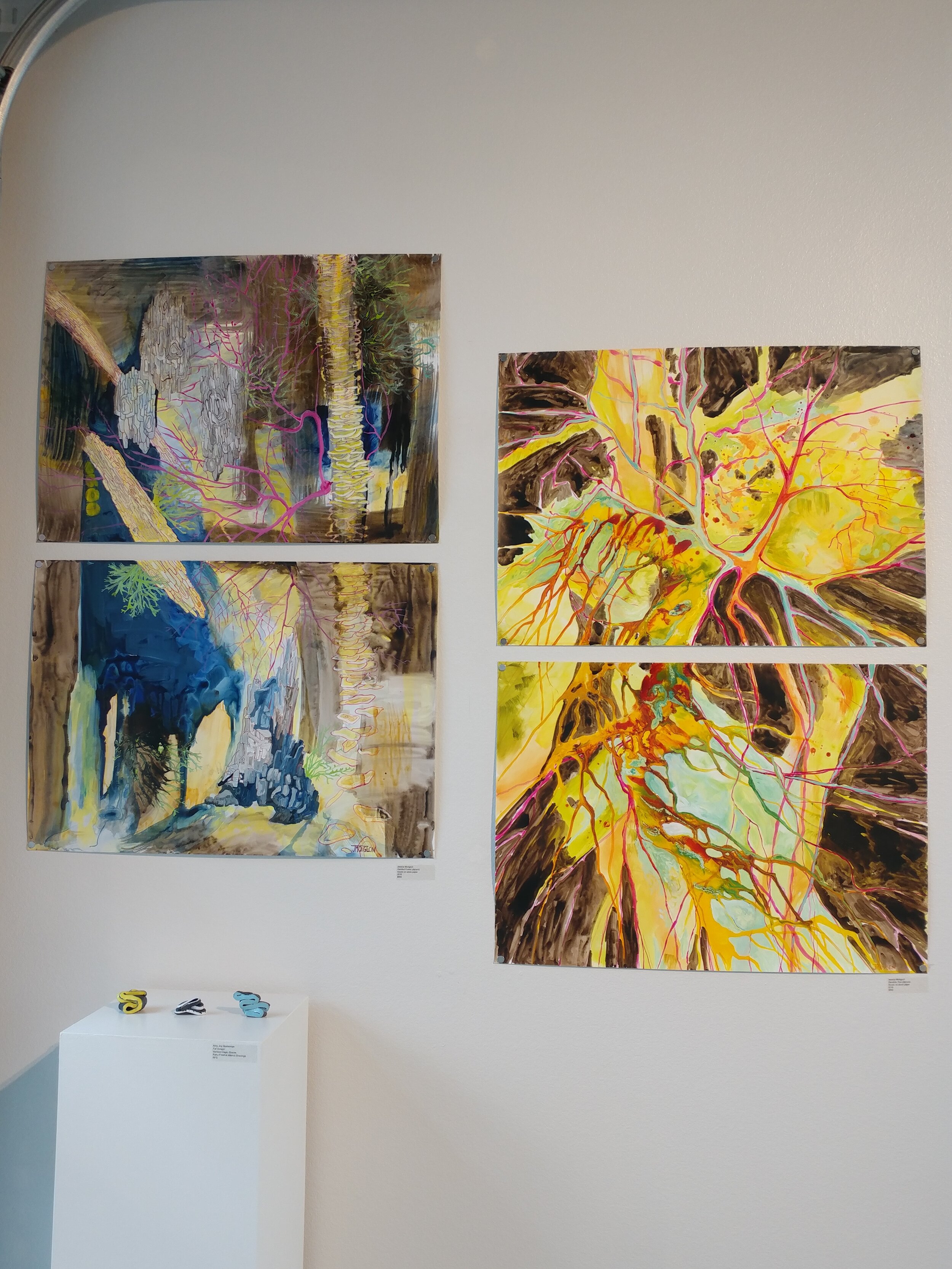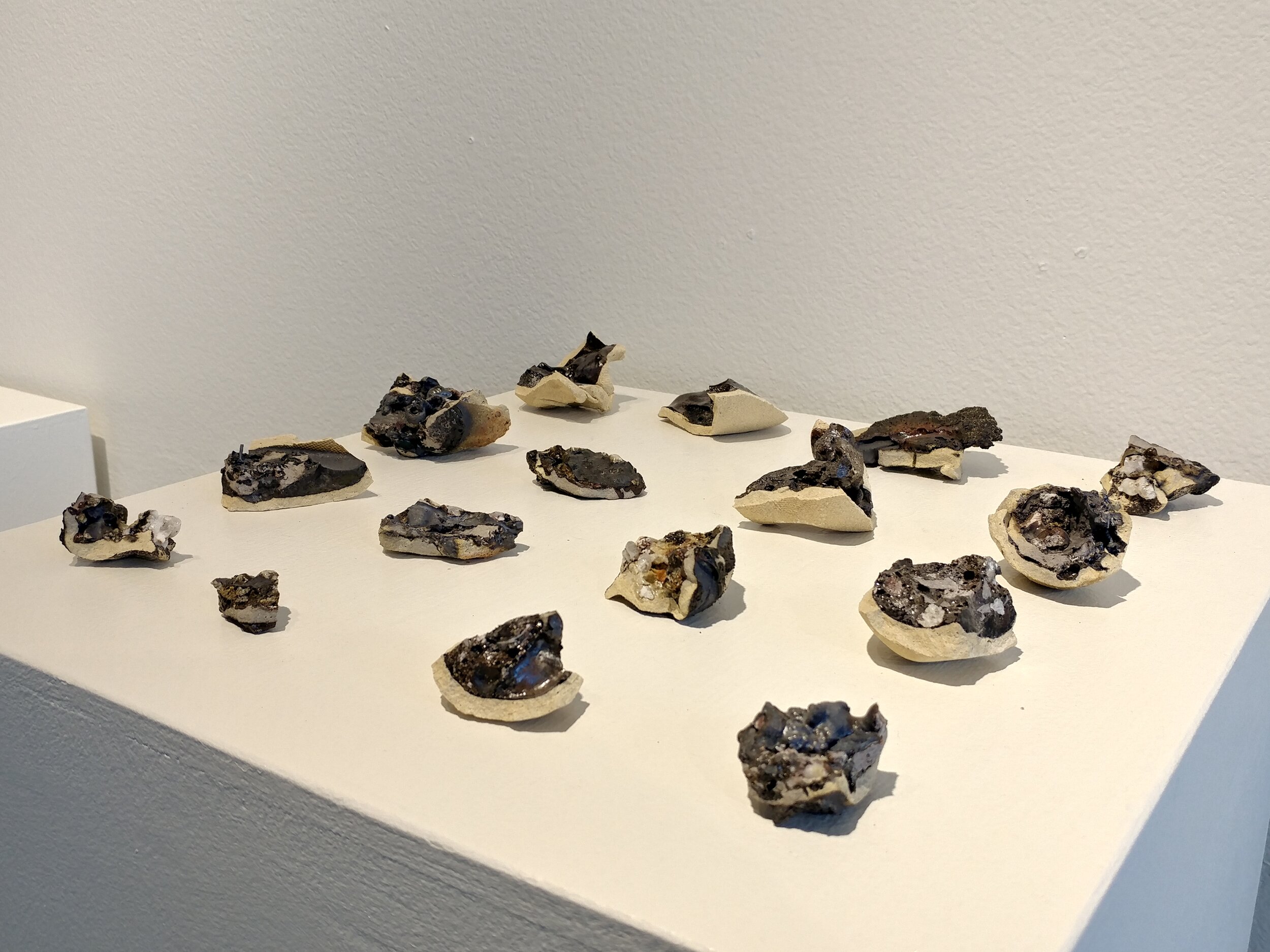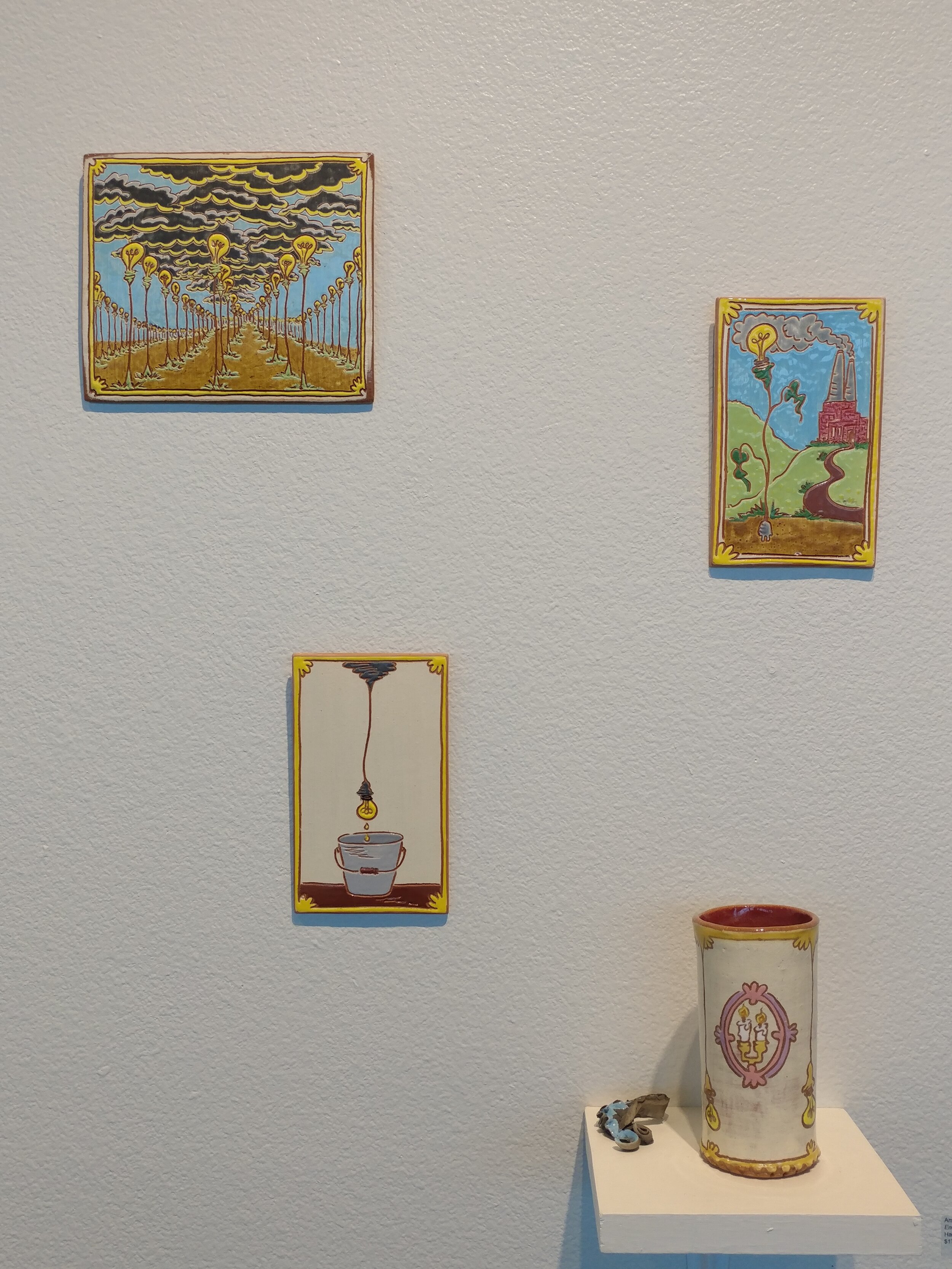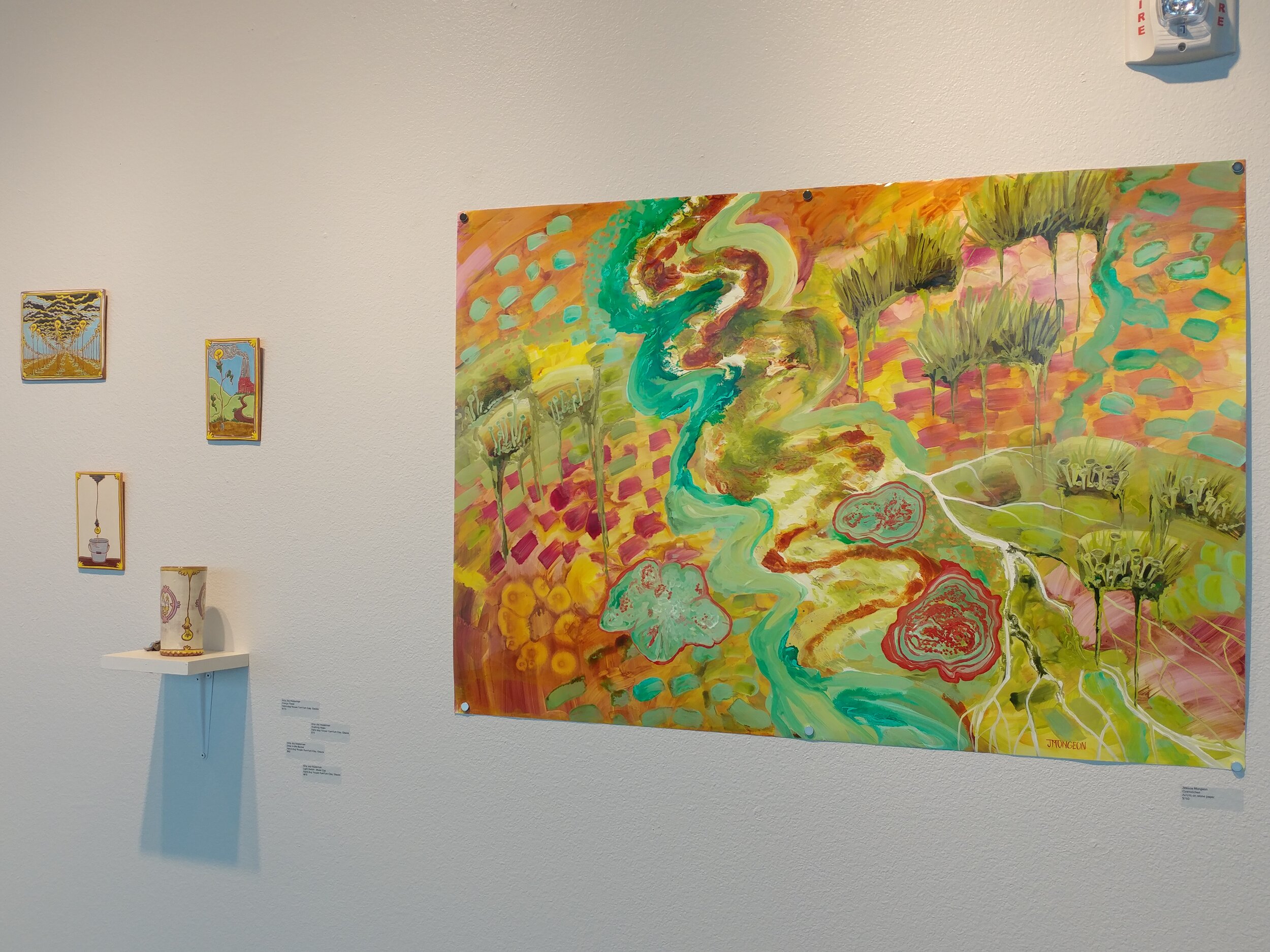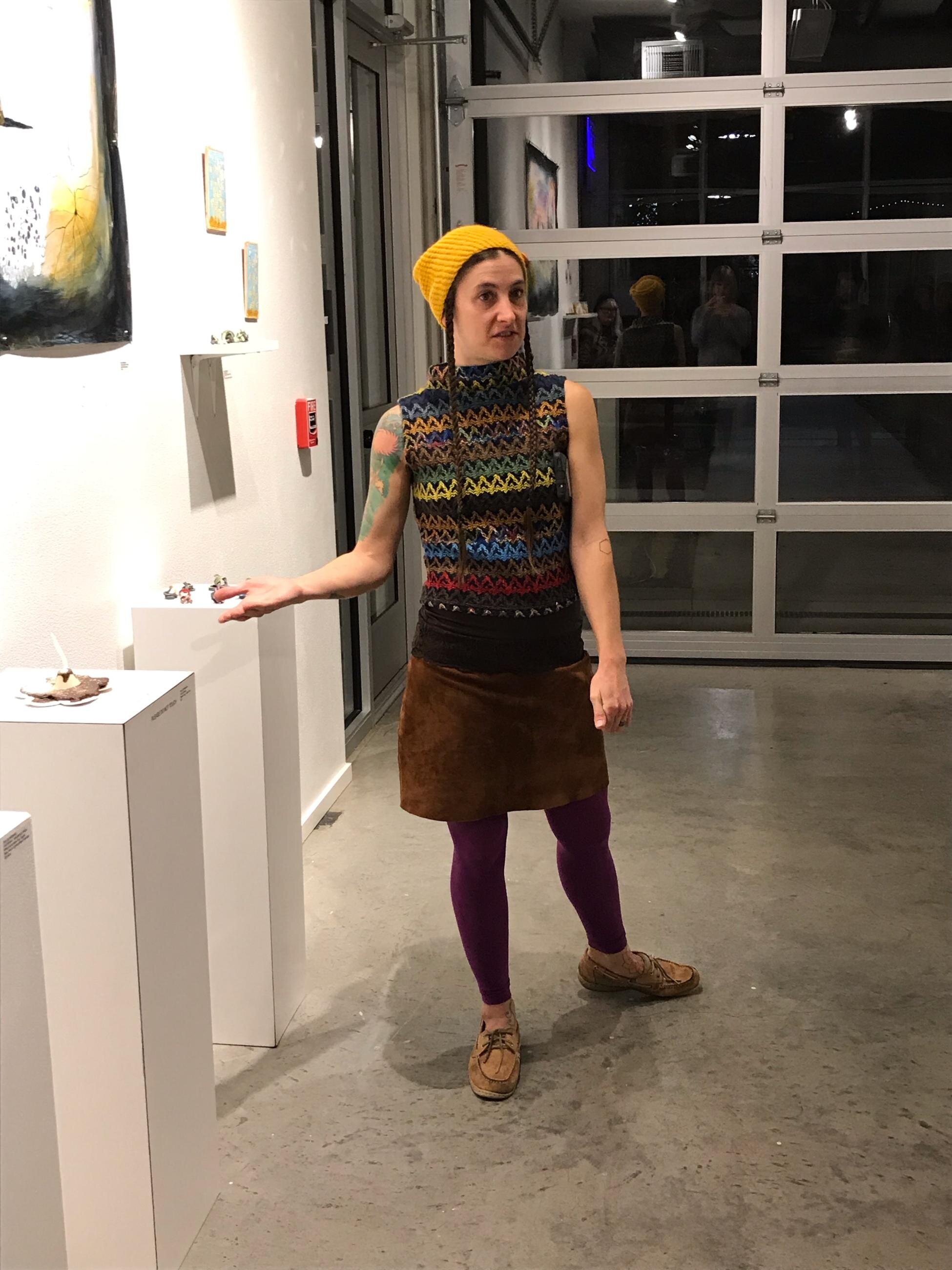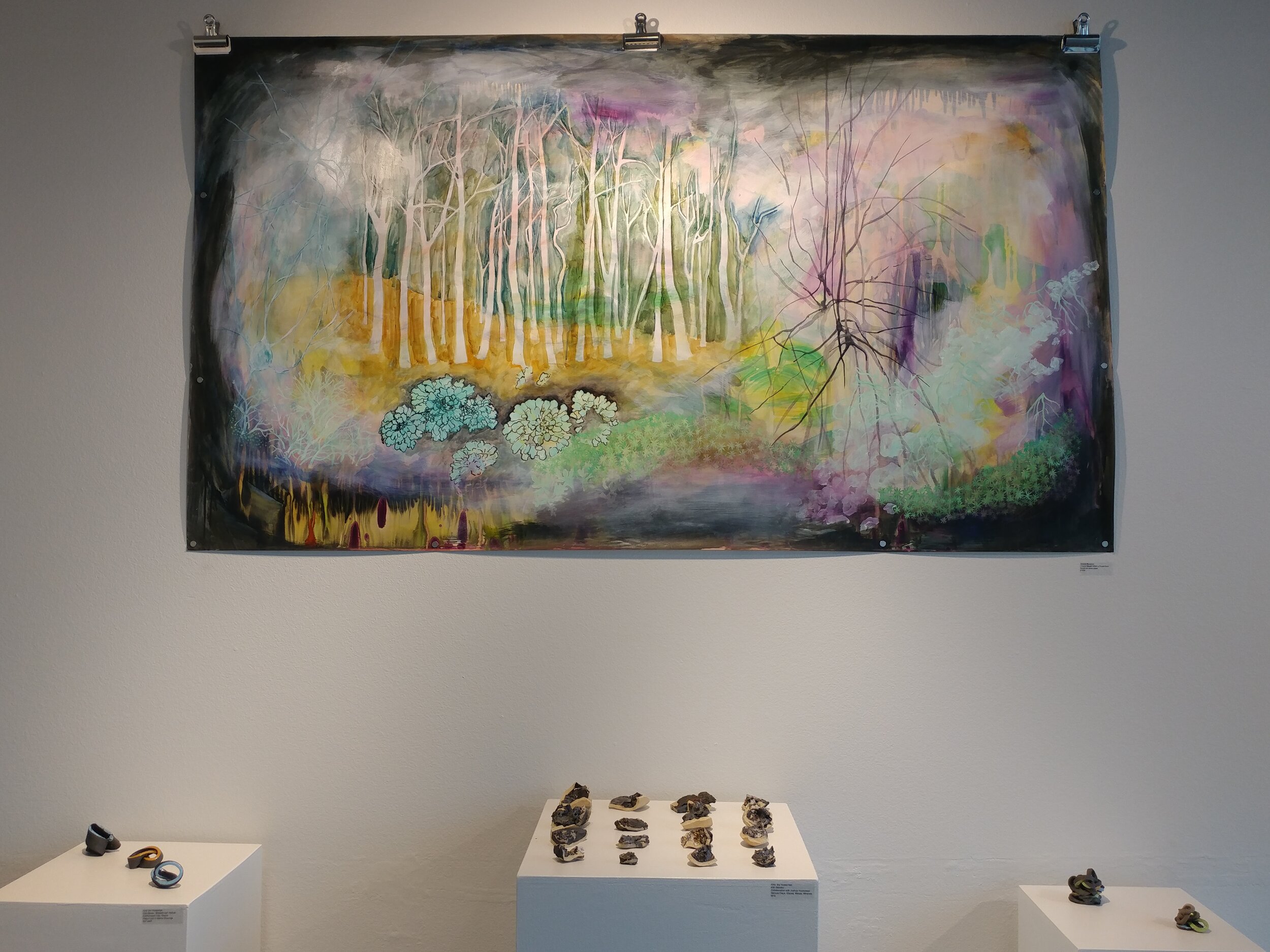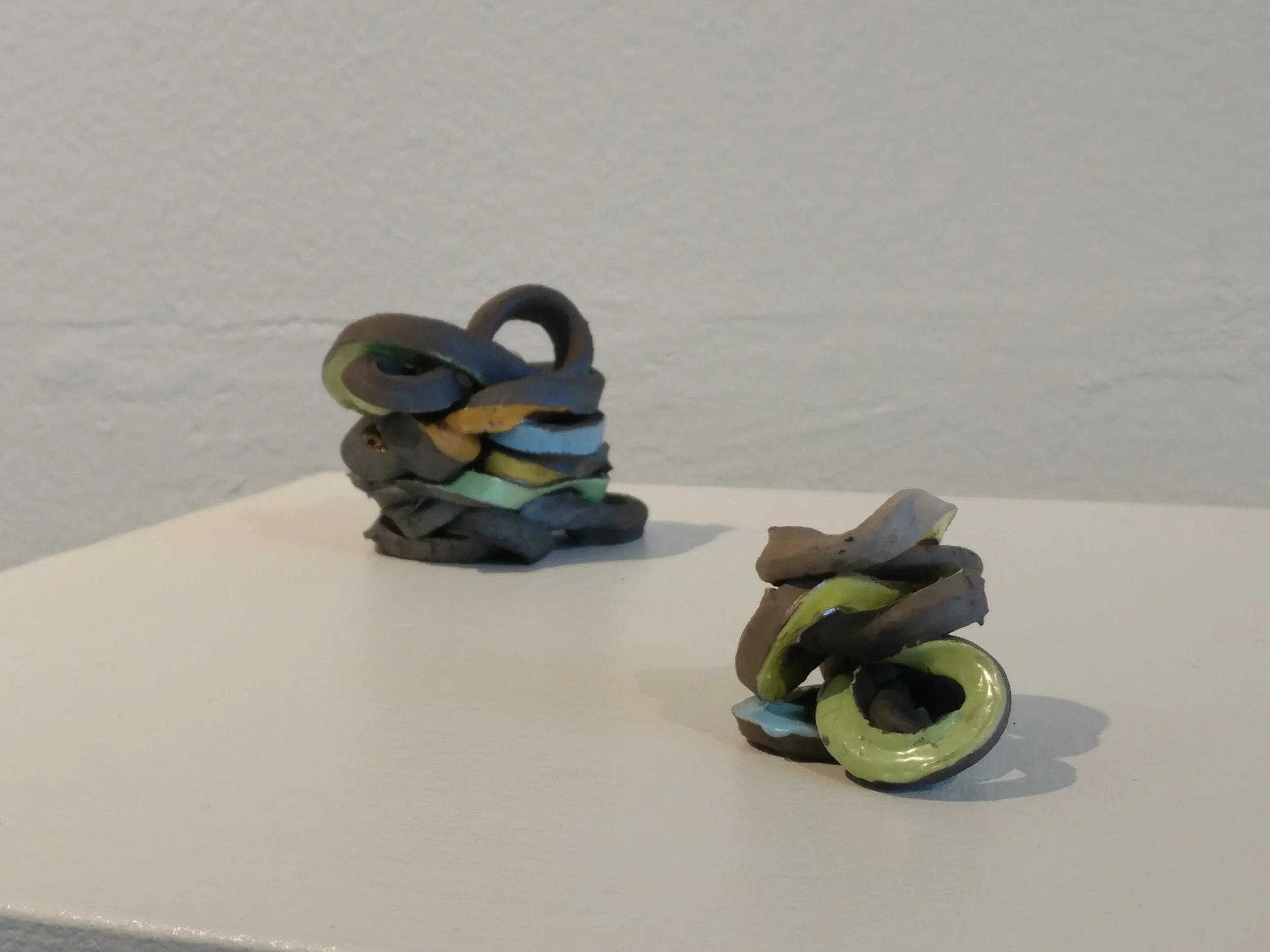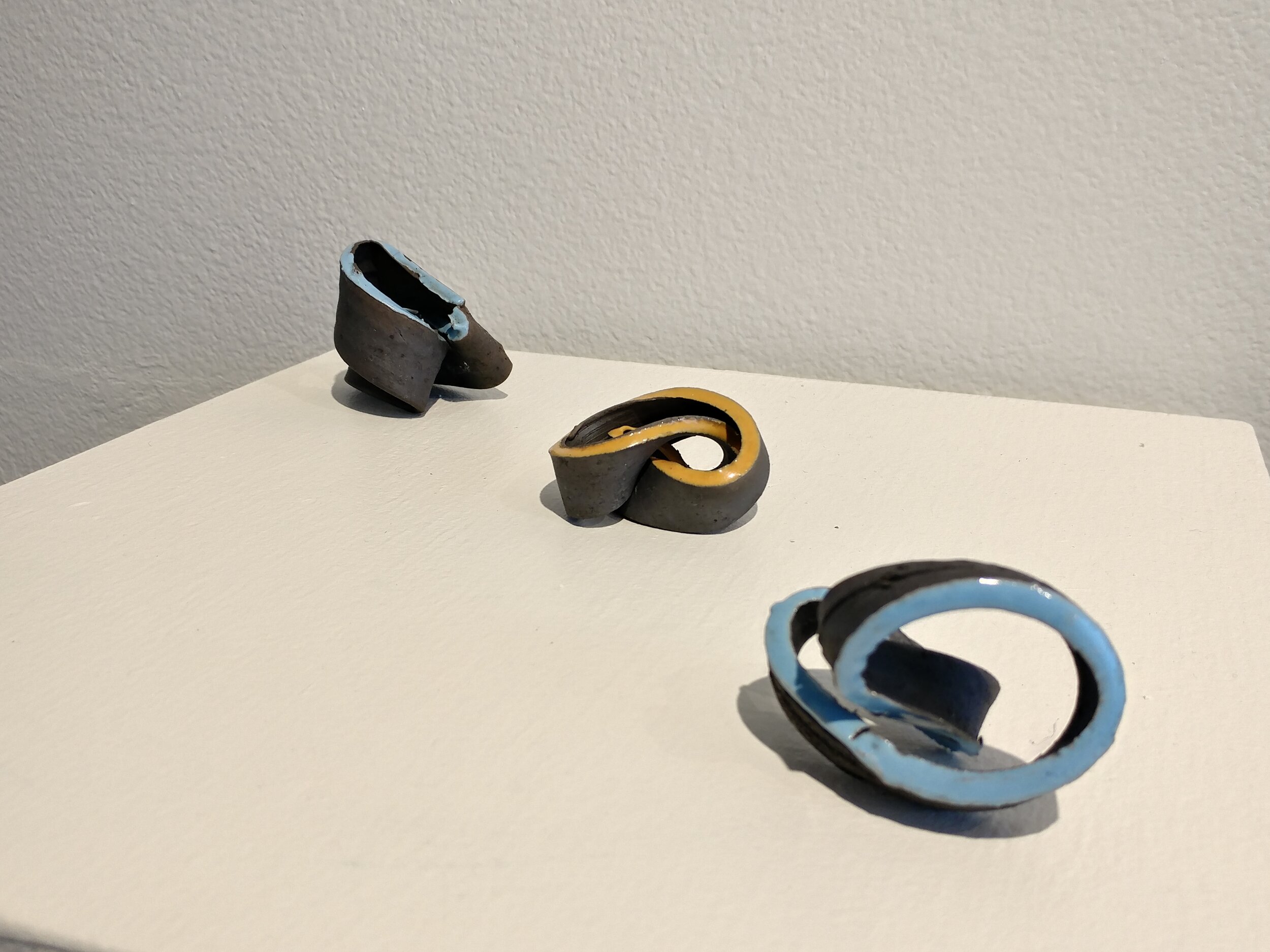Abstracted Earth
Paintings by Jessica Mongeon and Ceramic Sculpture by Amy Joy Hosterman
Artspace Loveland Lofts Gallery
140 West 3rd St
Loveland, CO
Opening November 8th, 6-9pm
on view November 8th - 22nd
This series examines the relationship between humans and nature; highlighting the similarities between human brain neurons, natural organisms, and geographical features. Atmospheric landscapes are painted with acrylic on tree-free eco-friendly paper. By using unexpected and sometimes jarring color combinations, I create a visceral or intuitive response, similar to how humans experience the environment. The nobler qualities of humanity are explored, as well as destructive tendencies. For example, I depict the destruction at Joshua Tree National Park that took place during the government shutdown. Neurons symbolize consciousness, an awareness of one’s surroundings. They show a connection between humans and nature because of their tree-like branching quality. Temporality and scale are examined as I depict human neurons on the same scale as lichen or roots. Self-similarity is when an object is similar to a part of itself; if you change the scale, e.g. by looking at an object in a microscope or from a distance, the object will look the same. Fractals are examples of exact self-similarity and scientists have studied river networks as natural fractal structures. Lichen operate on a much longer geological time scale compared to humans, with some species of lichen living over 1,000 years. This provides a sense of perspective when thinking about an individual’s impact on the environment. Neurons must connect and communicate to keep the mind and body alive. Similarly, lichen is made of a fungus, an alga and sometimes a yeast that work in symbiosis. By acknowledging our embodiment of nature, perhaps we can care for the ecosystems that sustain us as much as we care for our own bodies.
I’m fascinated by geological process, the formation and transformation of natural materials, and the direct relationship these processes have to the technical processes we use in ceramic work. I use ceramic sculpture to illustrate our relationships with the environment as we attempt to control it, and examine ironies by creating miniature representations of near-reality. I look for humor in the maddening absurdities of everyday life in American culture, and create detailed scrutinies of my personal observations on consumption, communication, relationship to material, labor, and value.My recent abstract sculpture began as a collaboration with Joshua Hosterman, when he pulled scraps from my reclaim bucket and encouraged me to fire them. This turned into a genuine interest in the forms that my refuse takes, as I cut unwanted clay away from works in progress. I tend to overthink my work, and this new practice of celebrating the shapes that occur through the process of making has given me a new appreciation for the intuitive. These forms are artifacts of the ceramics process, and a microcosm for the natural geological cycle of Earth's elements, manipulated and forged into "stone" through an artificial, accelerated geological metamorphosis. The irony in this contrast of an unimaginably slow natural process quickly synthesized in a controlled studio environment is worth contemplating, and I am at the same time poking fun at myself, observing nature, and studying process.
